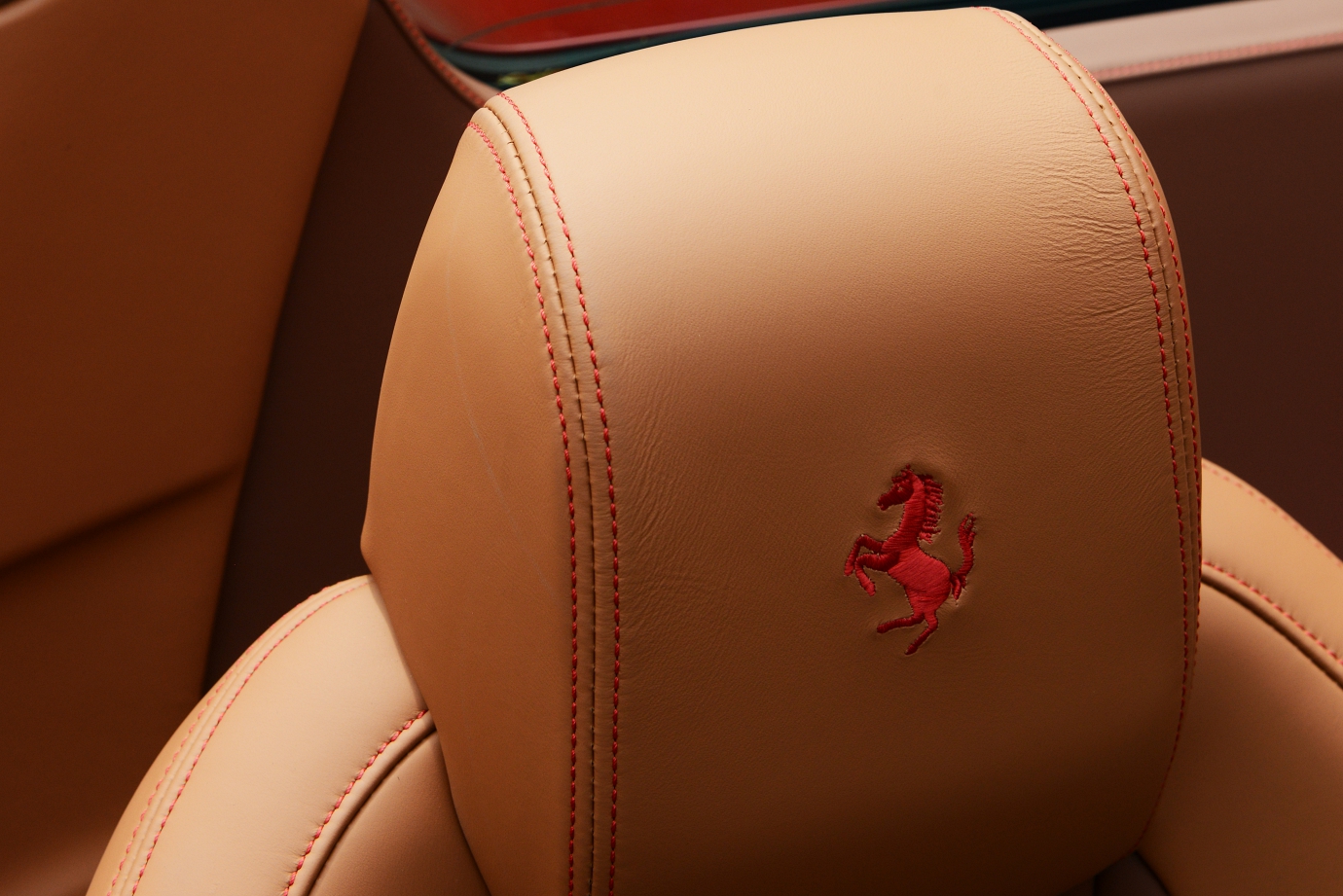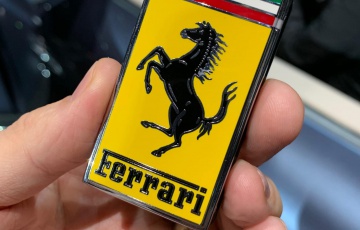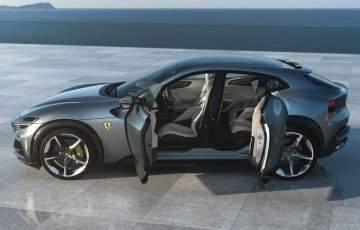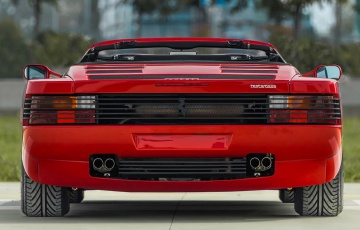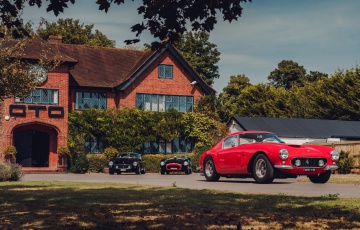Amazing Spiders, Man : Ferrari 430 Spider & Scuderia Spider 16M & 458 Spider Drive [review]
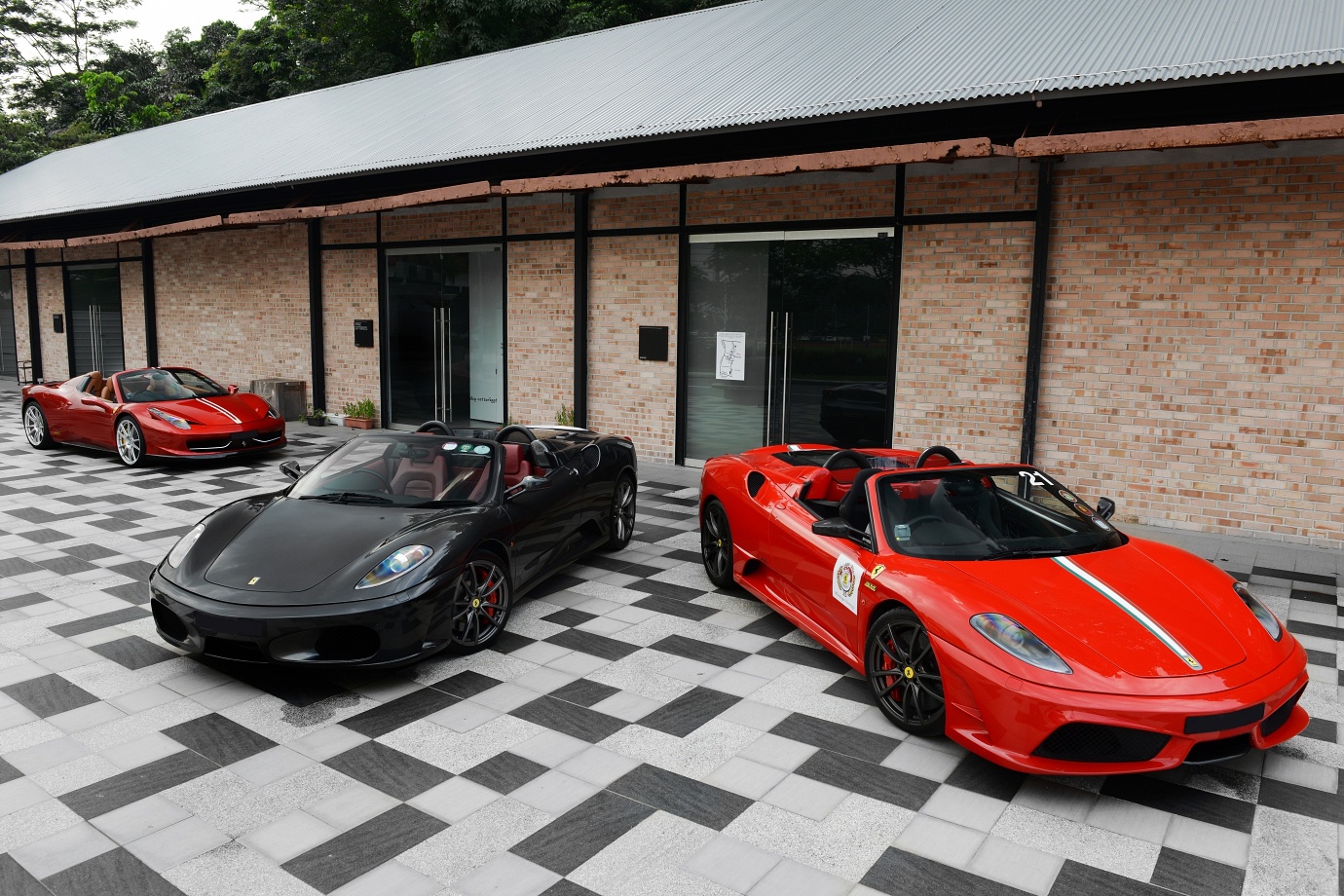
Ferrari 430 Spider & Scuderia Spider 16M & 458 Spider Drive Review : Amazing Spiders, Man!
Singapore - Twist the key and one's sphincter momentarily tightens in involuntary anticipation as the thumb hovers with just the briefest of pauses over the bright red starter button – much like the same way it would prior to our friendly neighbourhood web-slinger’s virgin leap off a high-rise office block.
This two-step start up process is part of the covenant of commitment entered into between car and driver, especially when it concerns a brand of such thoroughbred pedigree as Ferrari.
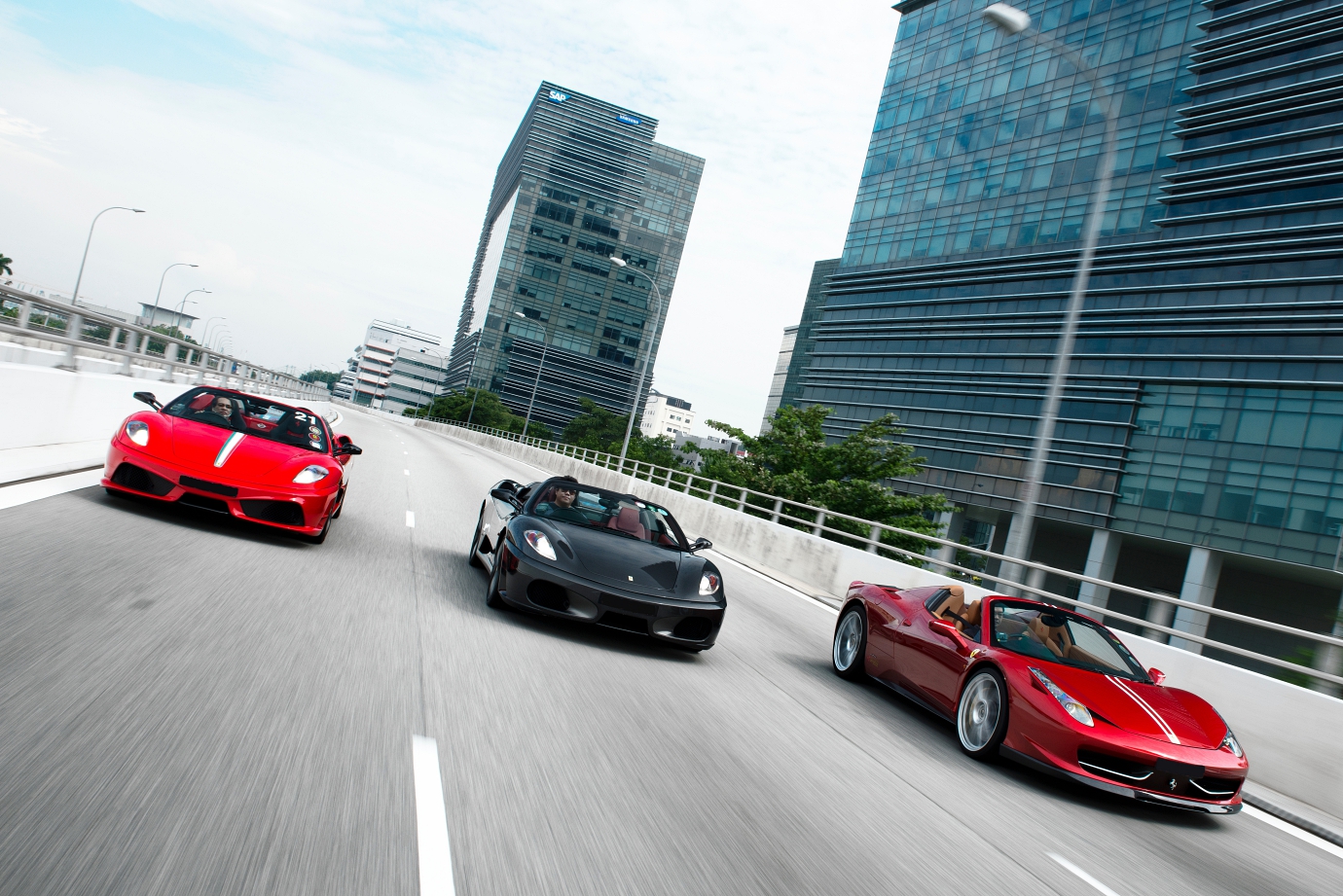
Special edition or not, there’s no such thing as ‘just another Ferrari’, since every model feels special.
And like all truly special cars, the orgasmic sum total of the parts (yes, including the Fiat Group switchgear in earlier models) is far greater than the individual components, especially since there isn’t any feeling of badge engineering involved.
There’s no wild posturing and garish colours. A Ferrari just is.
Convertibles attract the most flak from fair-weather enthusiasts, who are often quick to condemn them as cars for pansies who don’t appreciate driving.
Hence, it was imperative in our walk down memory lane to assemble two very special F430 Spiders to hang loose with the 458 Spider – a F430 Spider in stick-shift and the very limited Scuderia Spider 16M, a drop-top version of the ballistic 430 Scuderia.
(Click HERE to read about the 430 Scuderia)
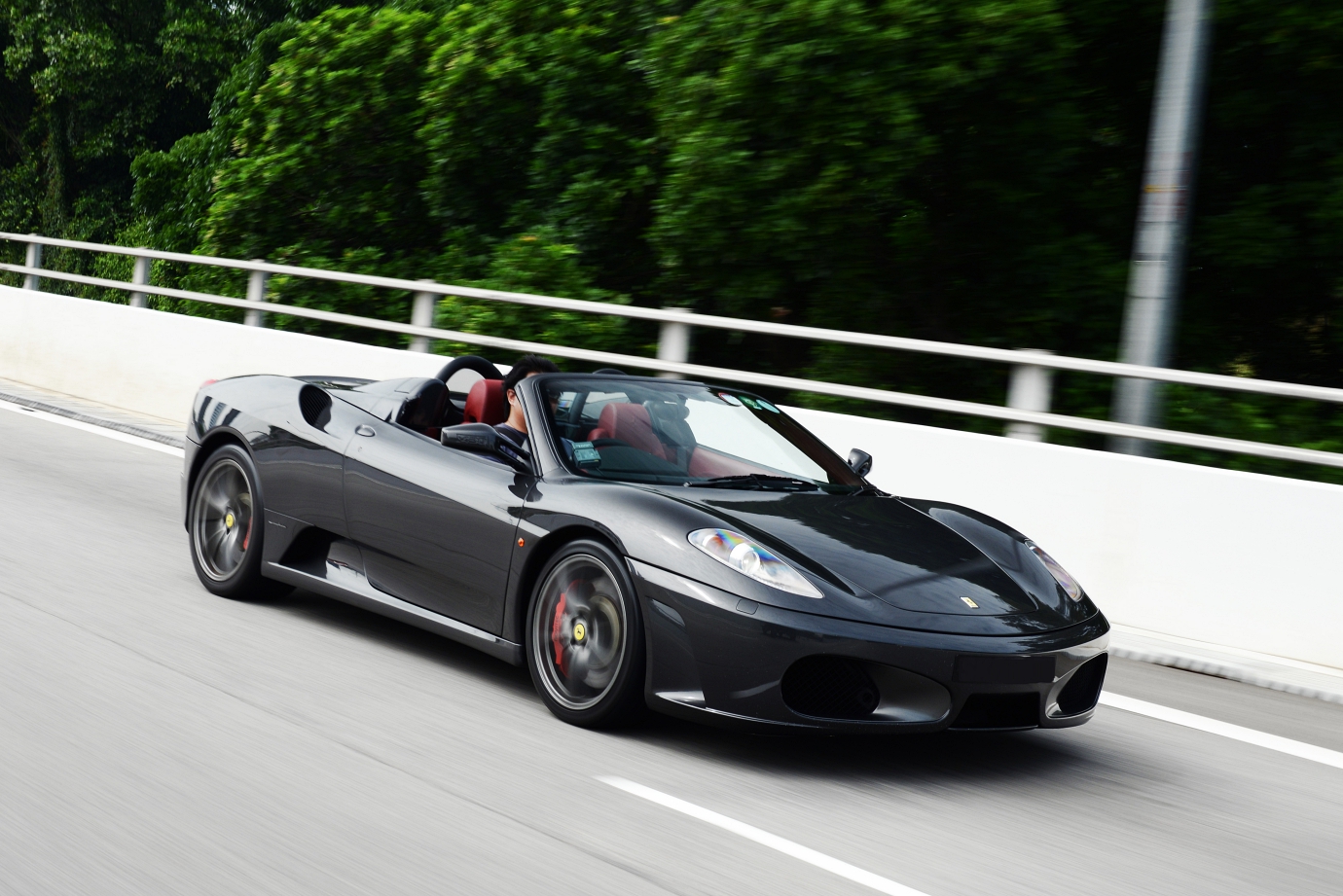
And yes, in Ferrari vernacular, the convertibles are referred to as ‘spiders’, as opposed to the use of the arguably more pretentious ‘spyders’.
As a side-note though, try calling the Incredible Bulk who owns the Canna di Fucile (or gunmetal grey to us plebs) F430 Spider a ‘pansy’ to his face and see what happens...
As luck would have it, we manage to fire-up the three cars at the exact same time for a stirring, truly inspired aural performance that reverberates off the pristine white walls of Gillman Barrack’s imposing colonial sentinel.
If walls could talk these certainly would, but at the moment their whisper of echoed history is drowned out by the strident call to arms of three very angry nat-asp V8s.
Despite the years separating the three cars and the high state of tune of the 16M’s engine, the V8s sing in perfect harmony with nary a discordant note between them.
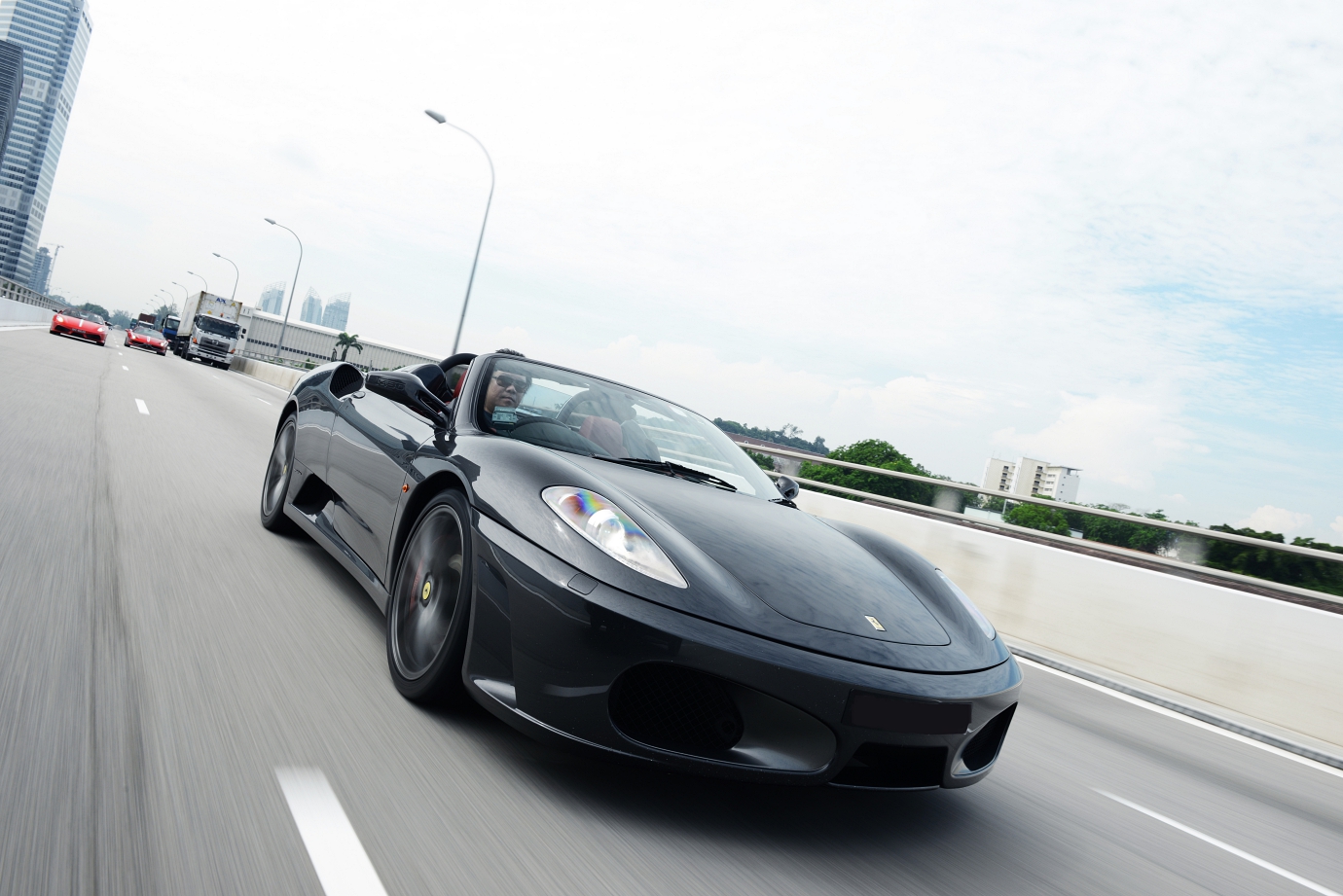
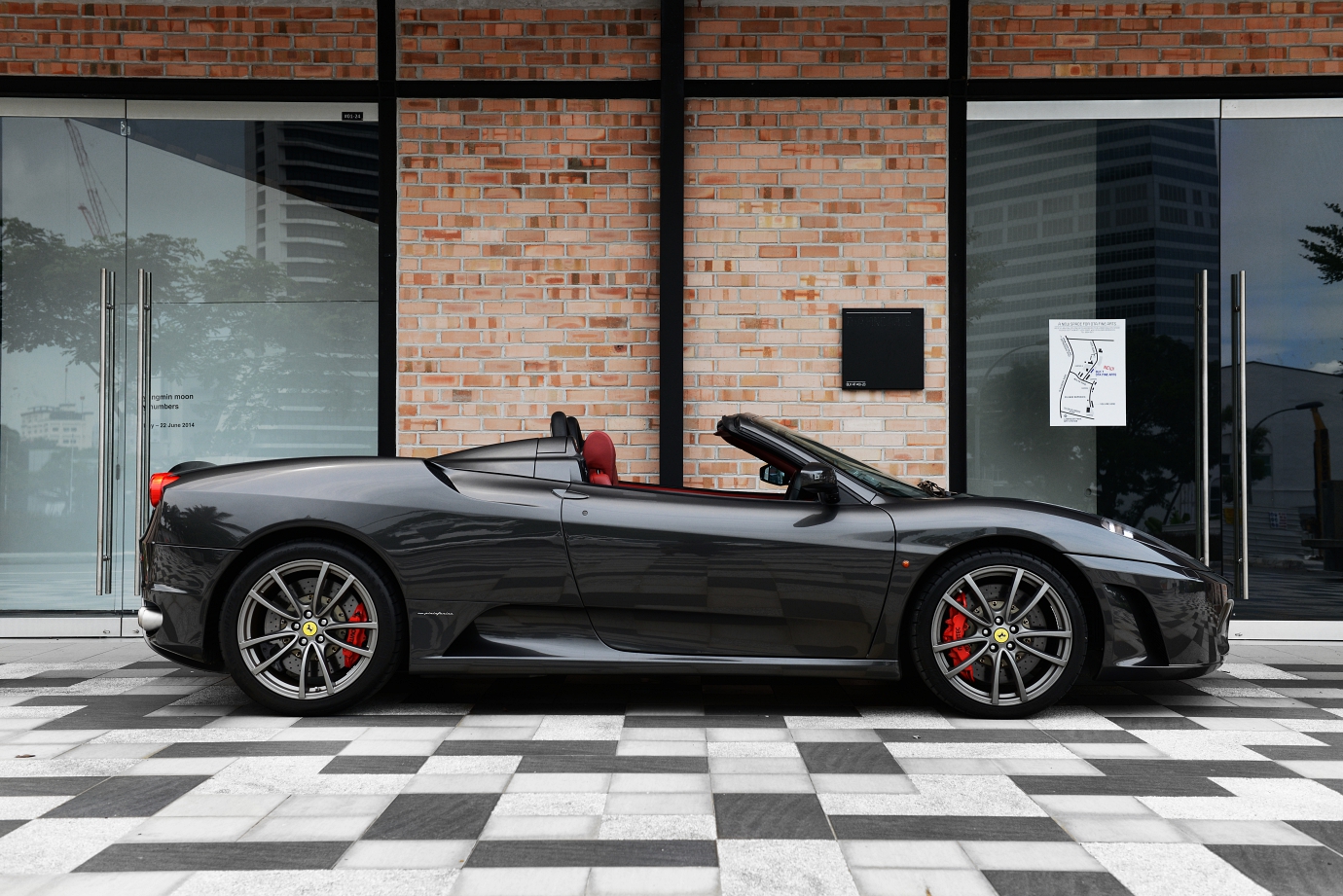
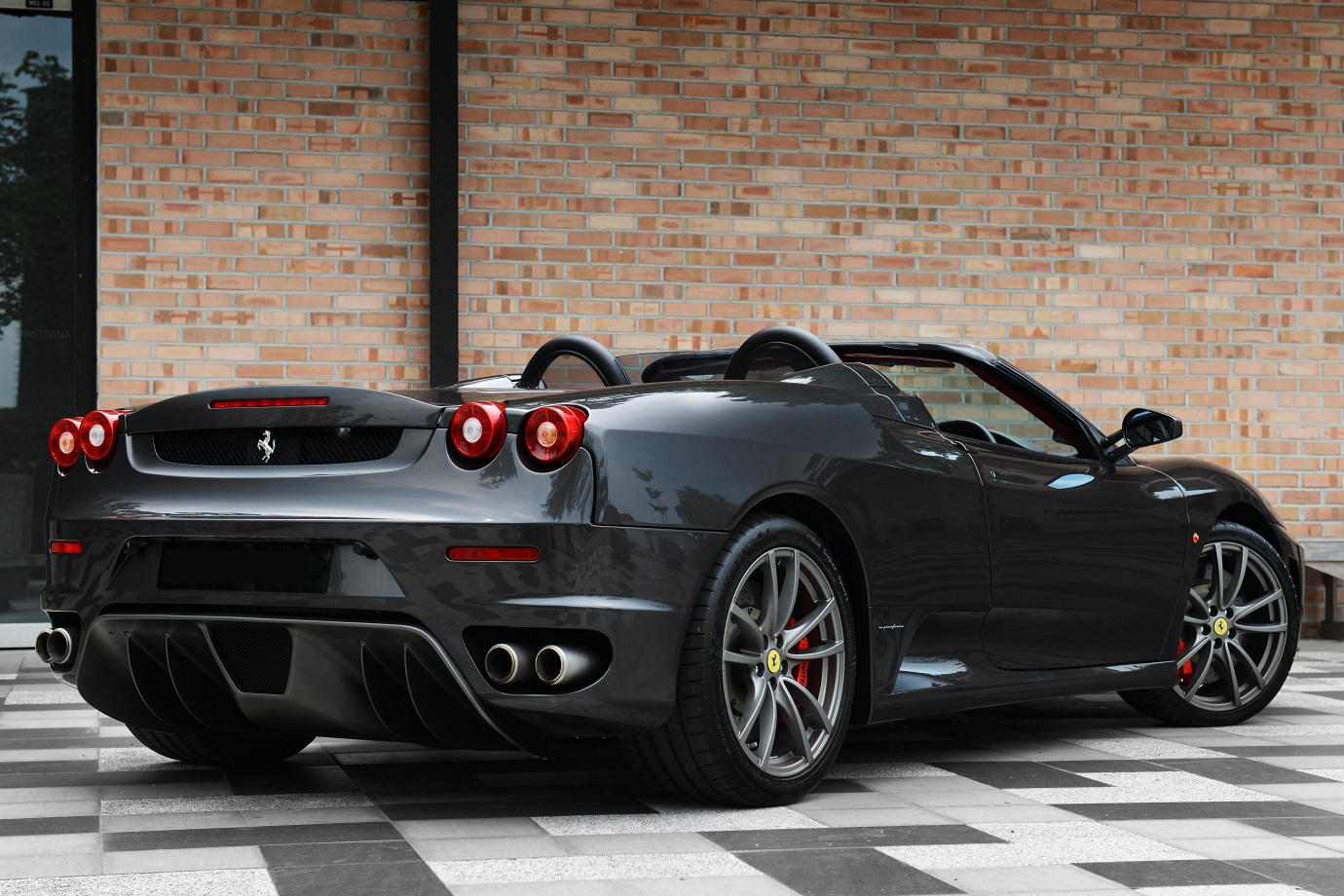
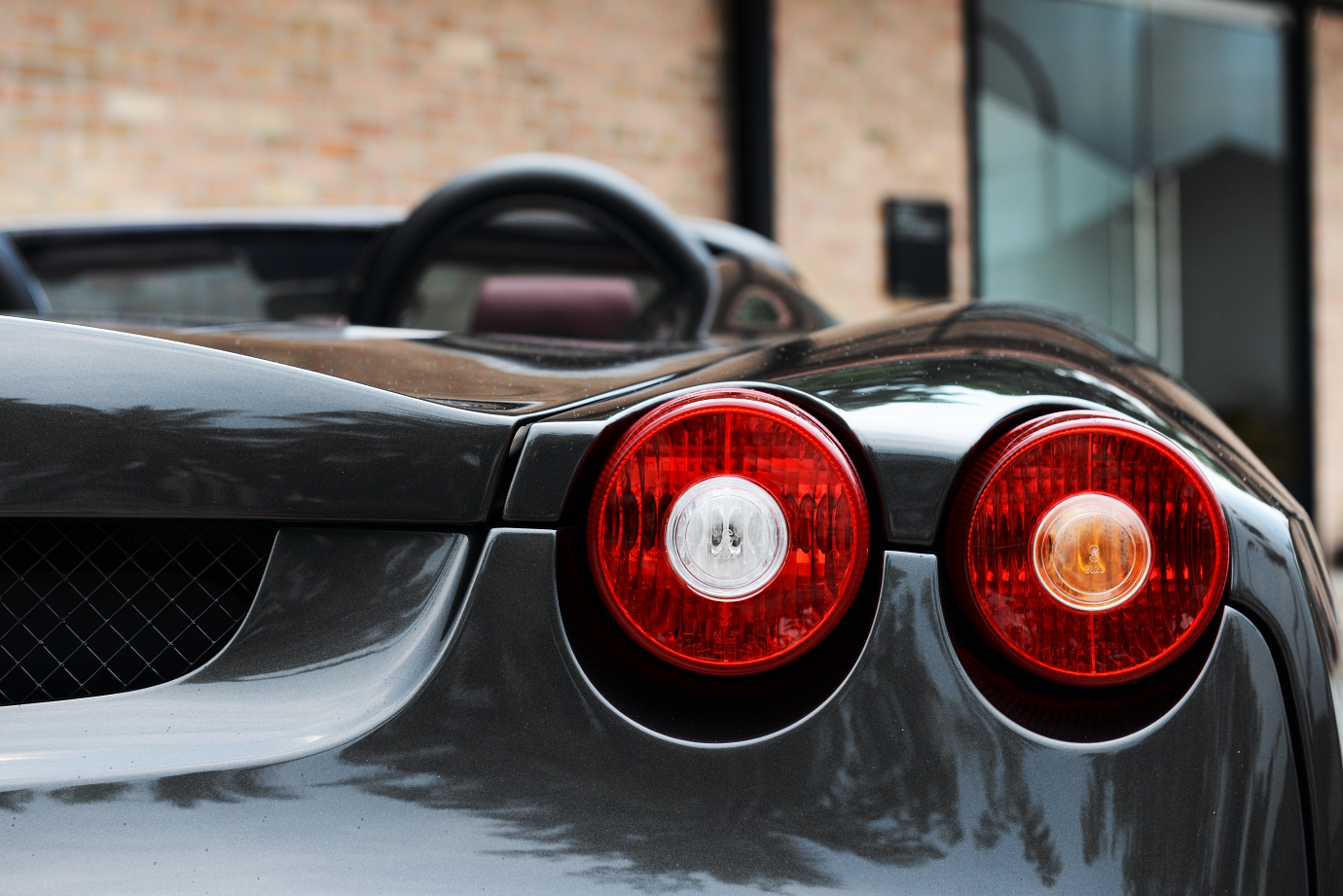
F430 Spider
Originally starting life in some variant of black or other, this 2005 car was resprayed in a more nostalgic Canna di Fucile Grigio of the 456/550/575. What’s so special about this particular car?
It’s the only stick-shift F430 Spider in Singapore, yes, complete with classic open-gate shifter and all. To our memory, this makes it only one of two F430s in Singapore in stick-shift: this Spider and a Berlinetta.
Fans of the brand from an earlier era seem to prefer the svelte, elegant lines of the 360 Modena/Spider, but the F430’s bold and brash aesthetics was a result of the brand moving with the times.
Of particular controversy seem to be the F430’s tail-lights, which practically rupture from the surface of the car, in a style that is reminiscent of the Enzo’s.
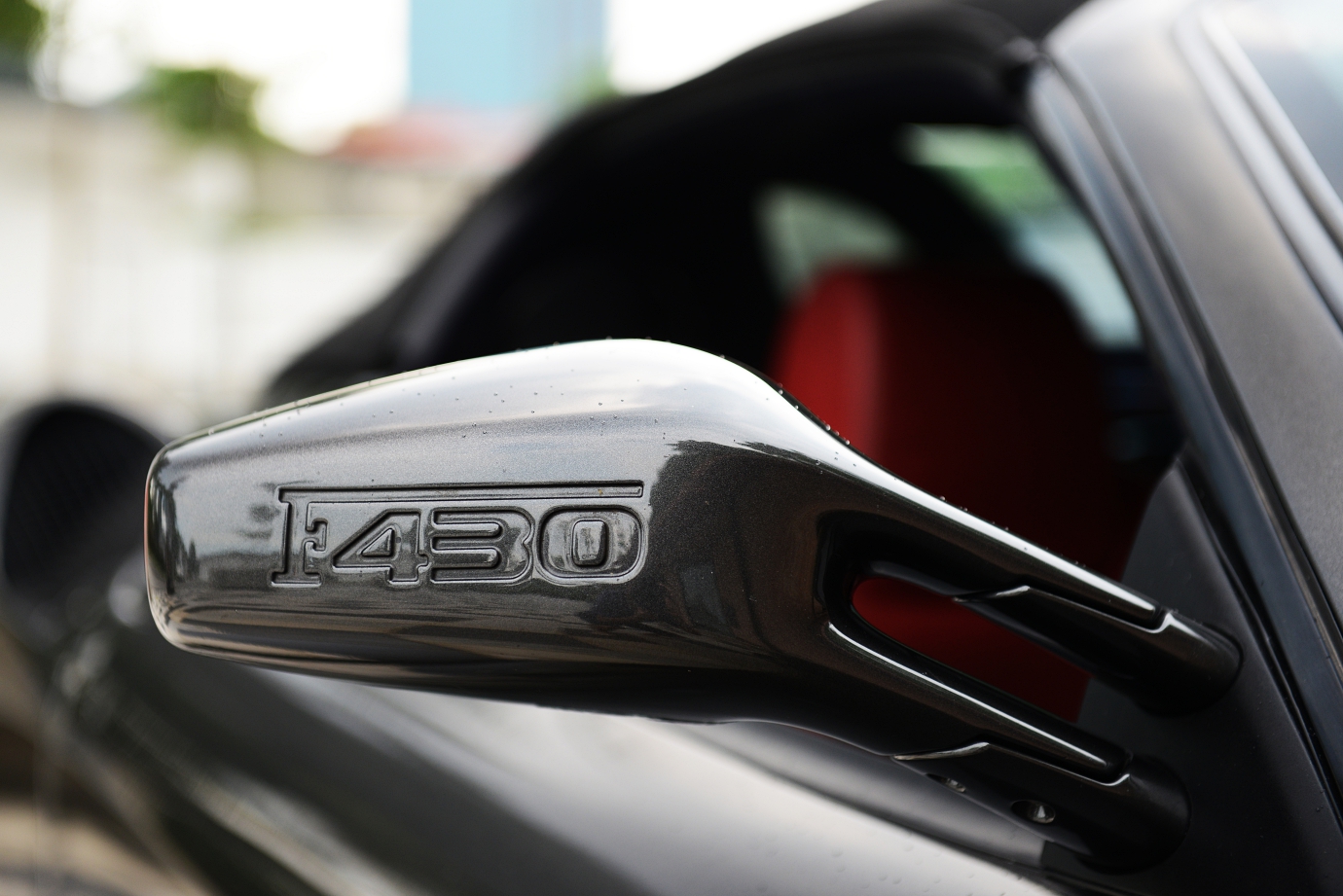
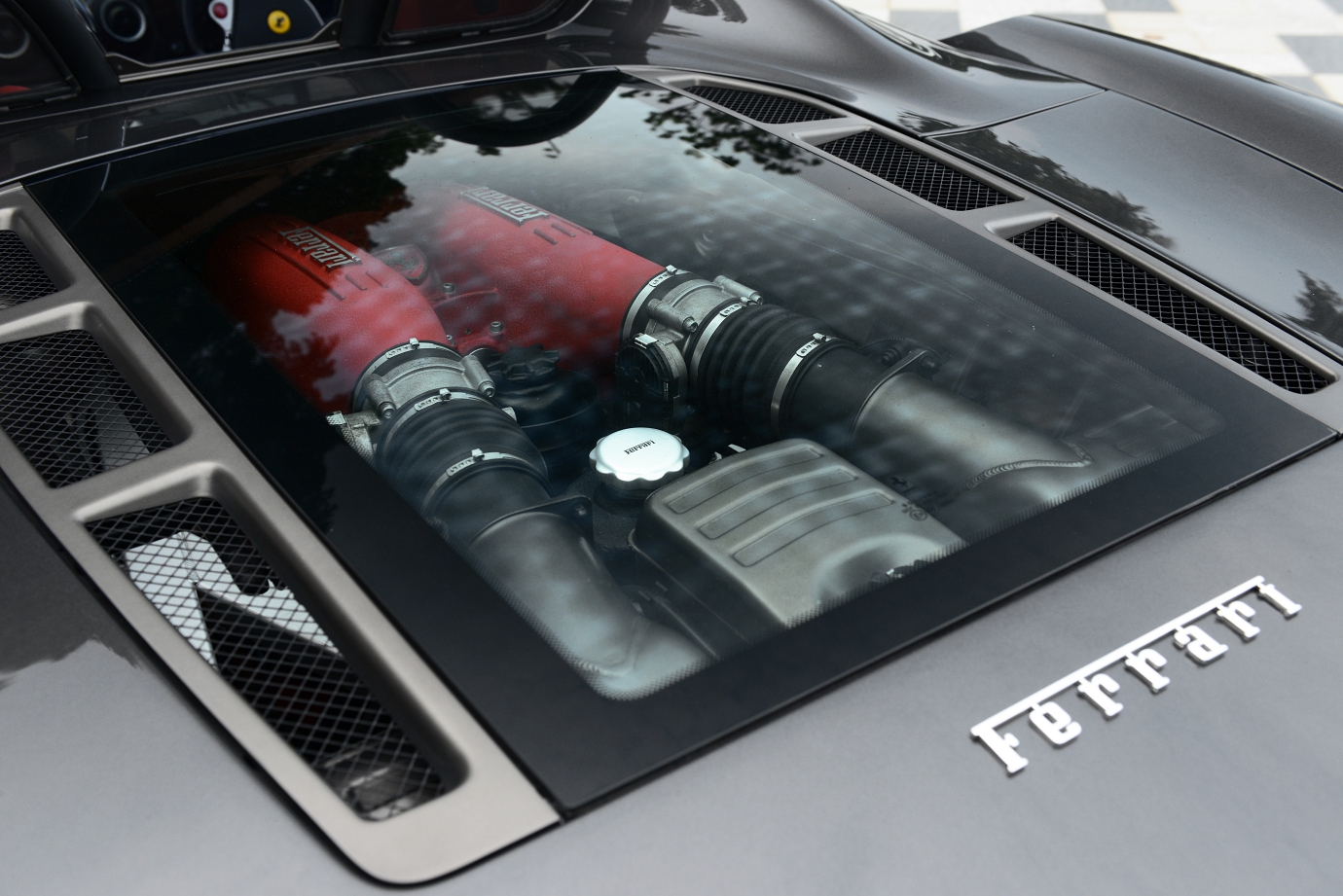
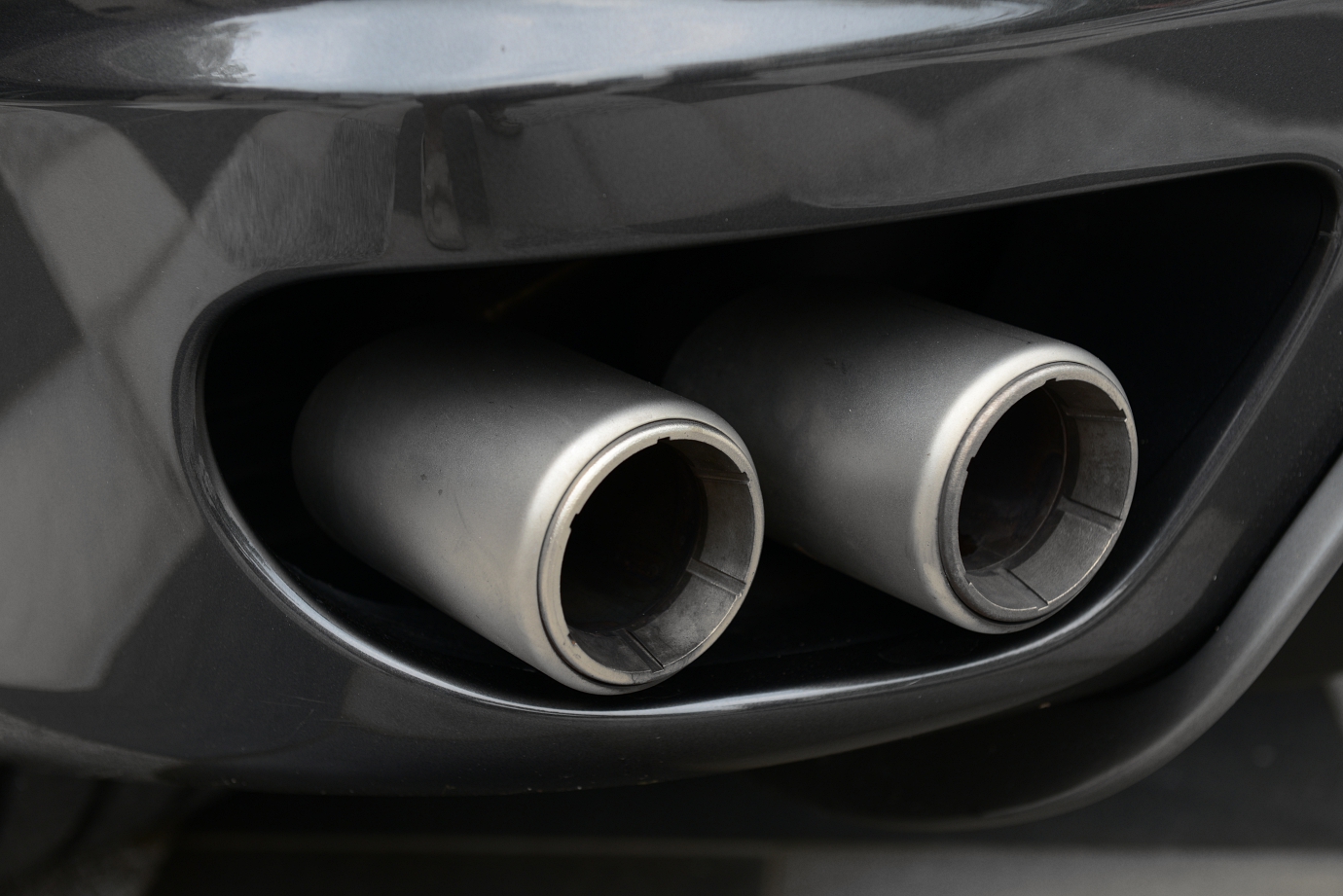
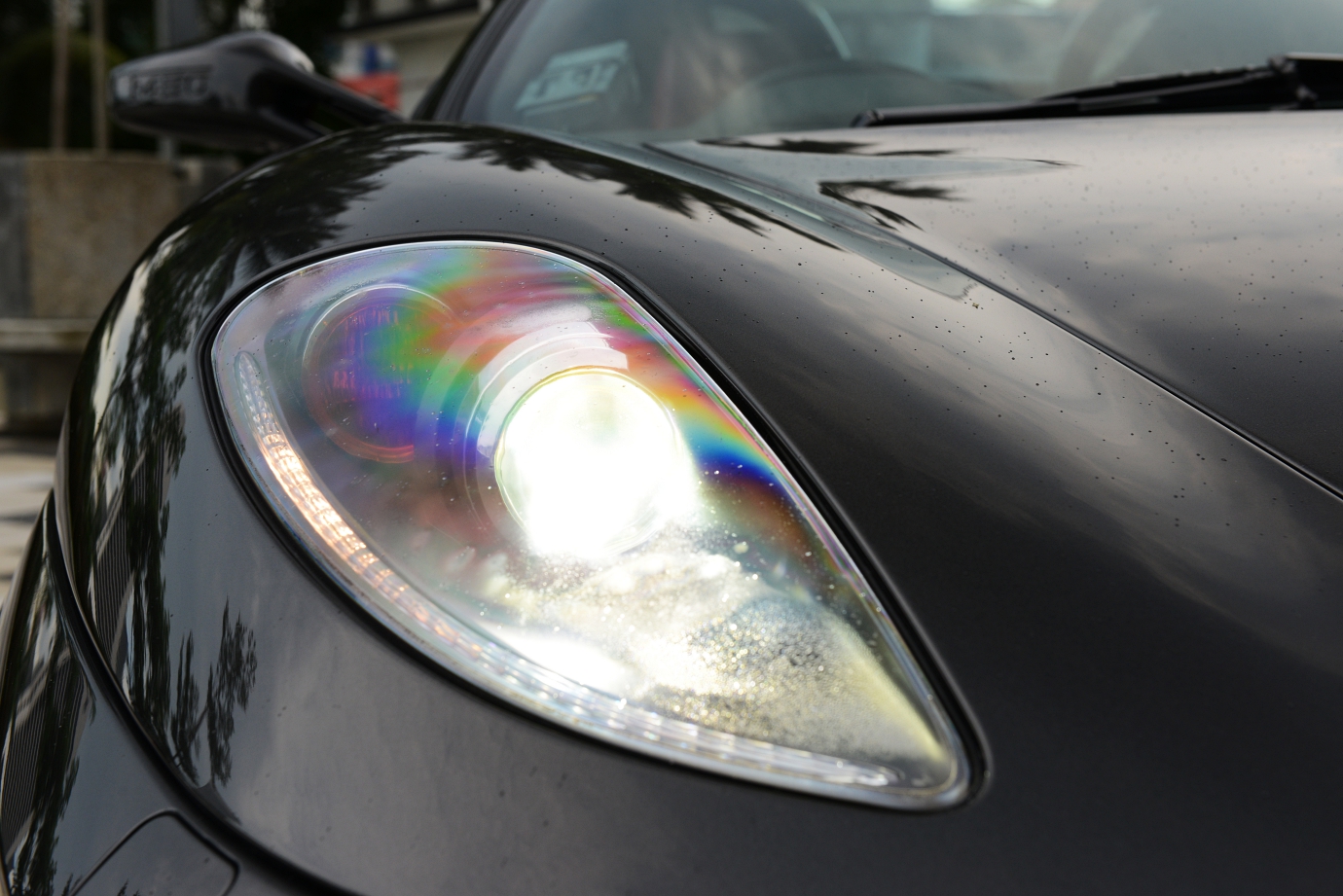
The current owner, the third in the life of this 60k km example, has no need for sensible cars, and of his two-car stable, this stick-shift Ferrari is the more sedate choice and his daily-driver, believe it or not.
The other? Well, it’s an unyielding motorsports-inspired air-cooled Porsche 911, but that’s a story for another issue!
The owner has a penchant for top-down motoring and feels that the V8 at redline is best enjoyed with the roof down.
He wryly tells us the car’s ‘playboy’ image was a strong deterrent initially when he was car-hunting, although he also confesses he was never in want for SYTs with the erotic exotic.
Since then however, this has become less of a factor as he is really getting into the groove with the car and is beginning to appreciate the complete appeal of a convertible over the coupe.
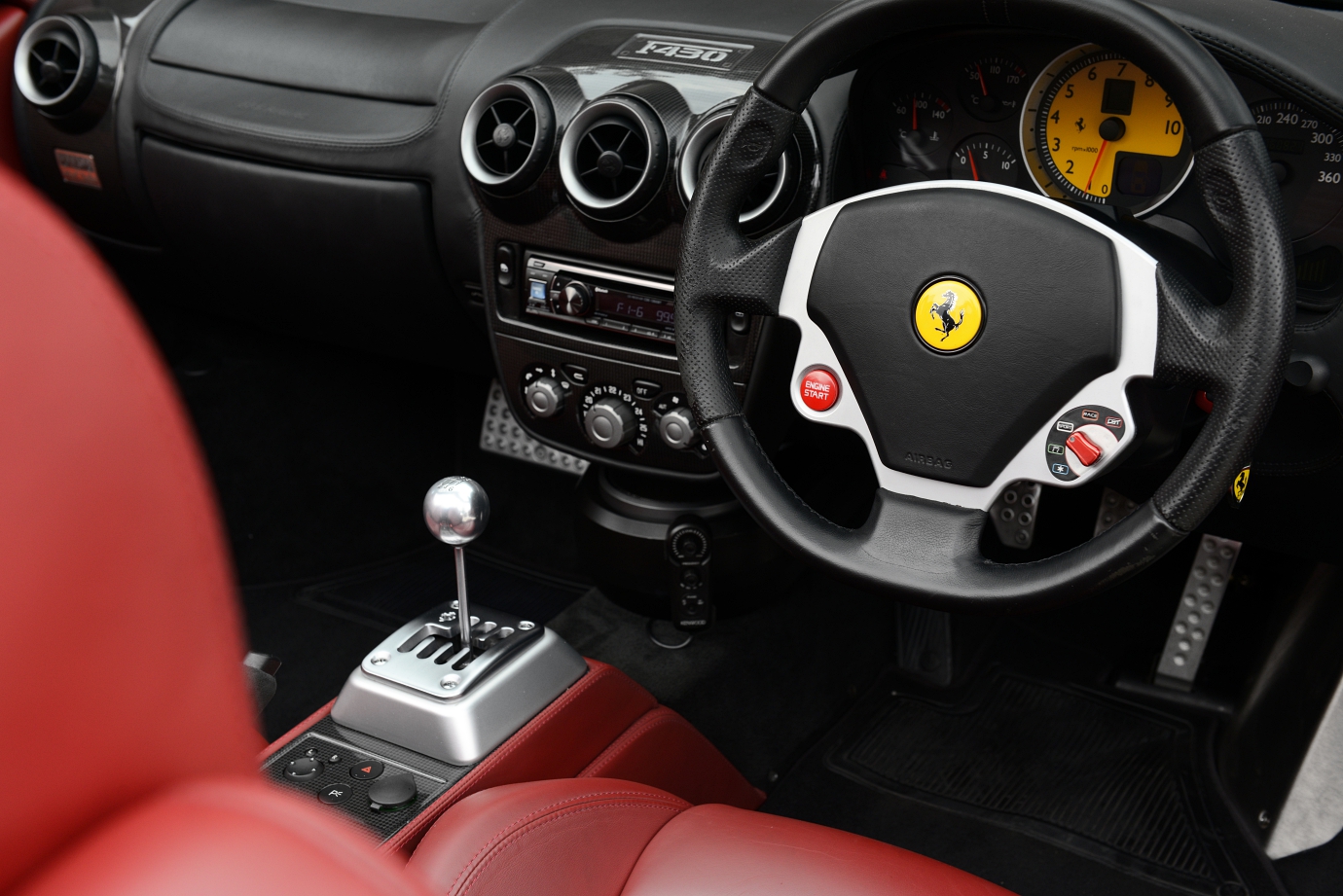
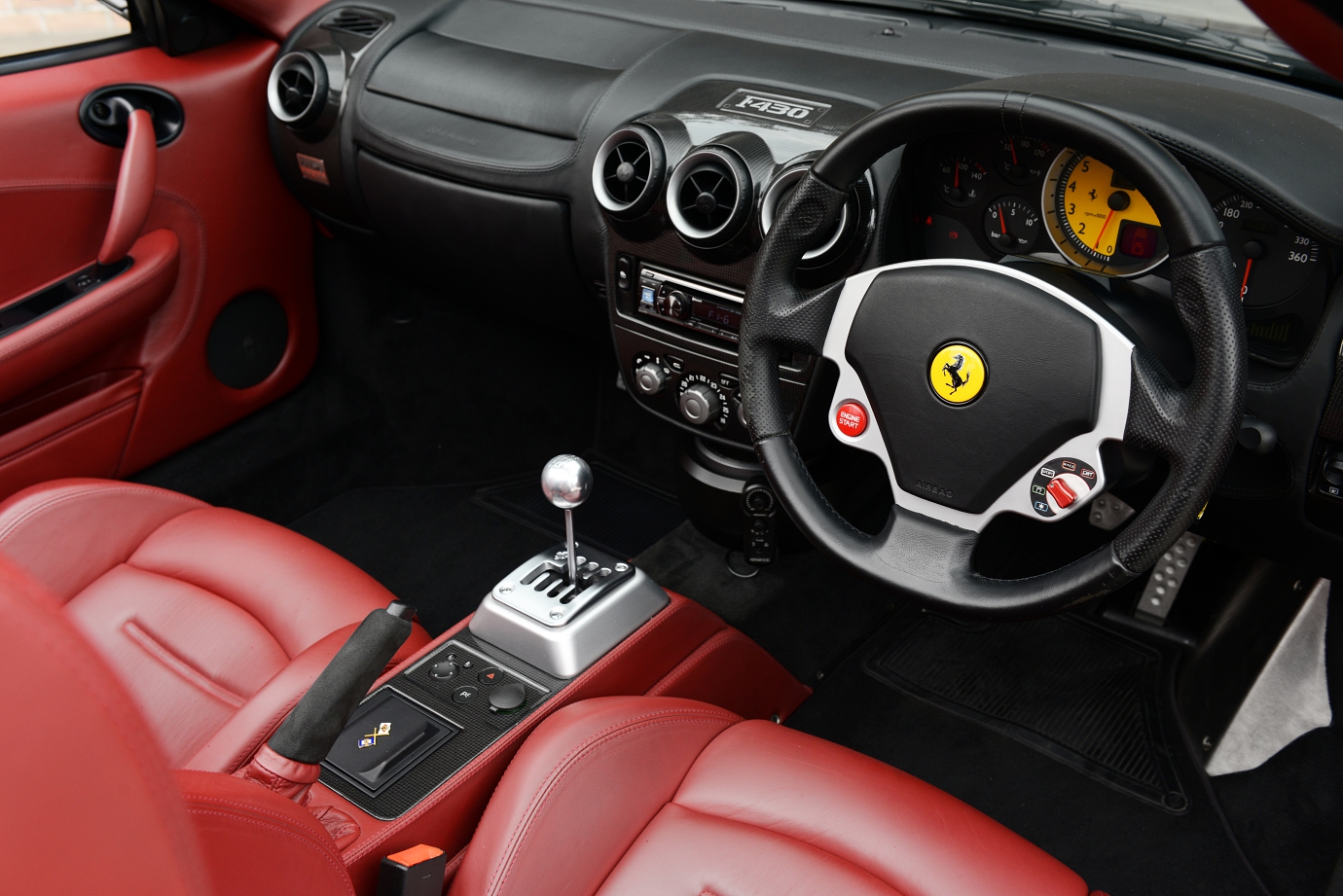
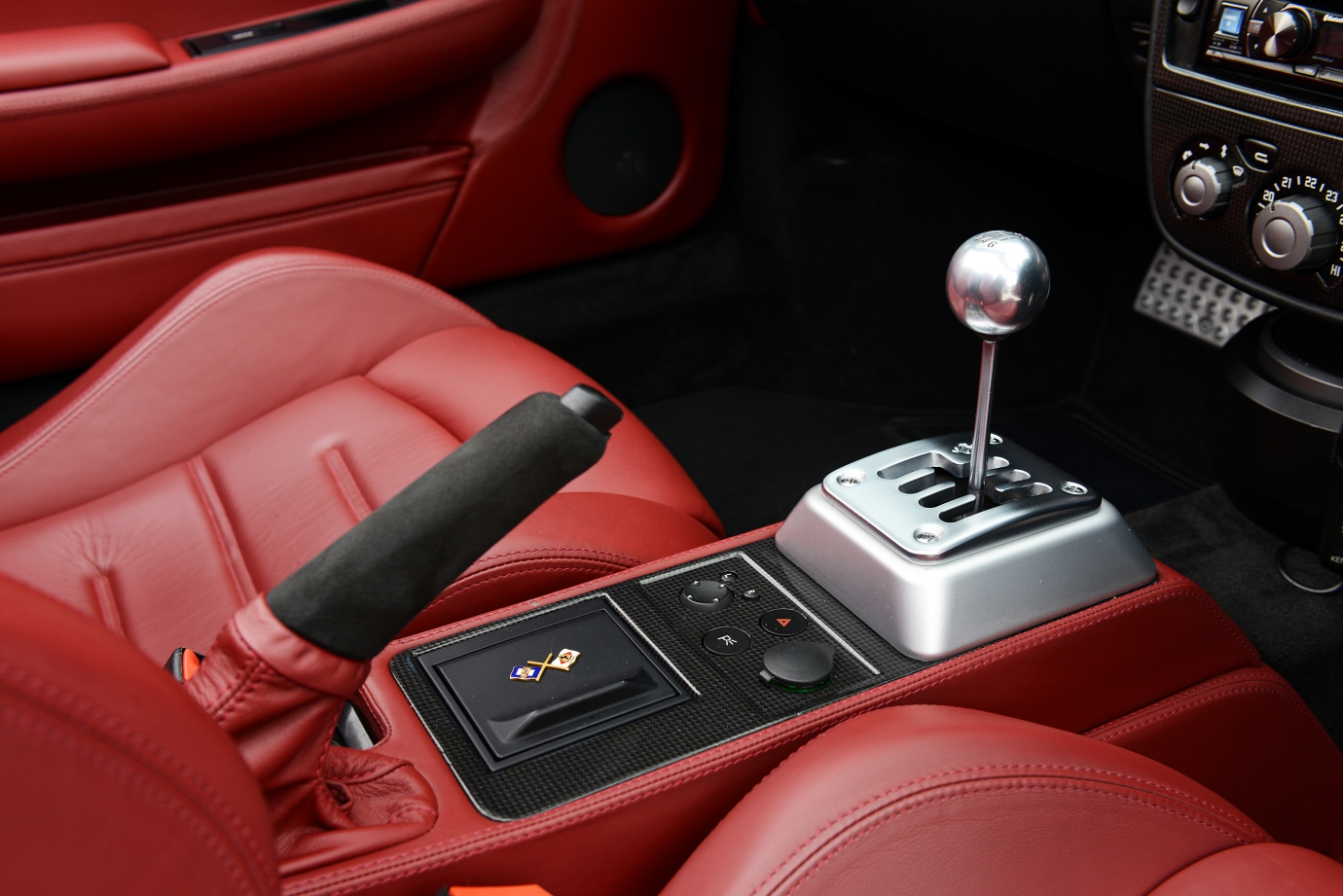
Not only don’t the latest Ferraris rock his boat, the open-gate shifter of his F430 Spider rekindles all sorts of nostalgia, since when he was younger, the F355 took up ample wall real estate – in fact, he is still on the hunt for a pristine F355.
During our drive, it becomes apparent how easy it is for the car to pander to daily drive sensibilities.
Apart from some blind spots with the roof up, the clutch isn’t of the thighmaster variety so getting stuck in a jam for 45 minutes isn’t a workout.
Of course, the most romanticised aspect of the open-gate is the ‘clack-clack-clack’ as you swop cogs.
The throws are short and very positive, and getting the shifter into each gear-gate is rewarding and immensely satisfying, especially when coupled to a bout of hard driving.
The car rewards a smooth style of driving, especially as far as working the elegant gear-lever is concerned – in fact it’s possible to drive it around in a leisurely fashion as you check out the boulevard sights (and let yourself be checked out as well, naturally).
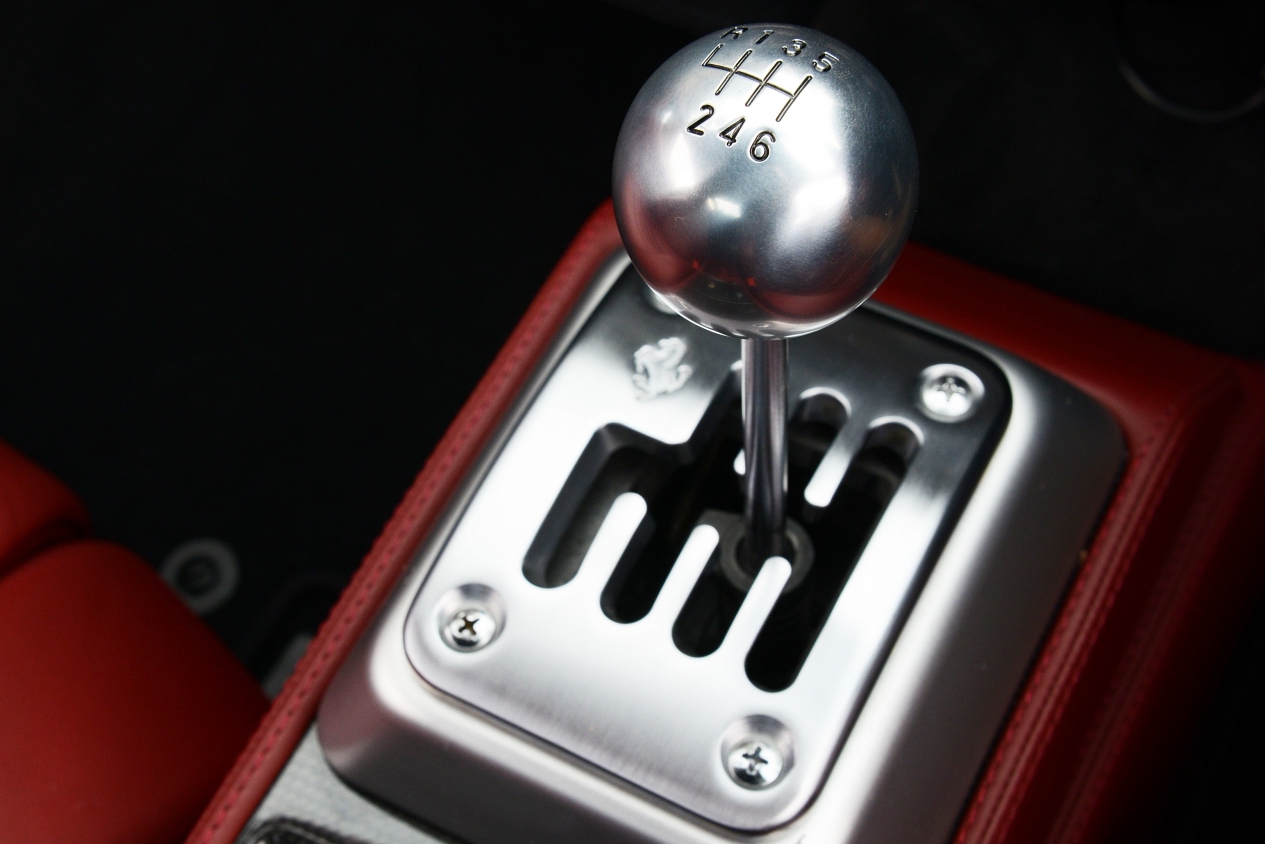
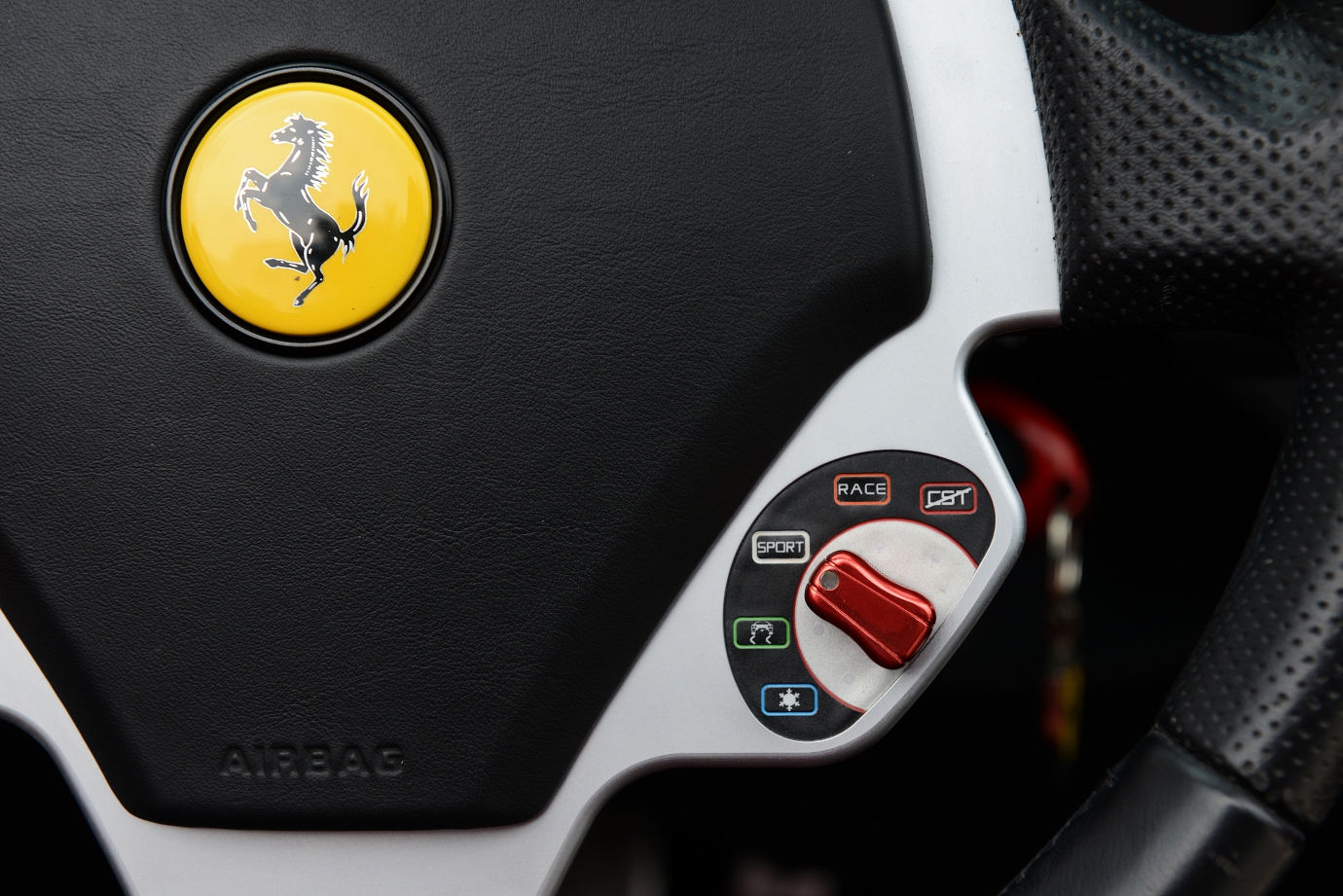
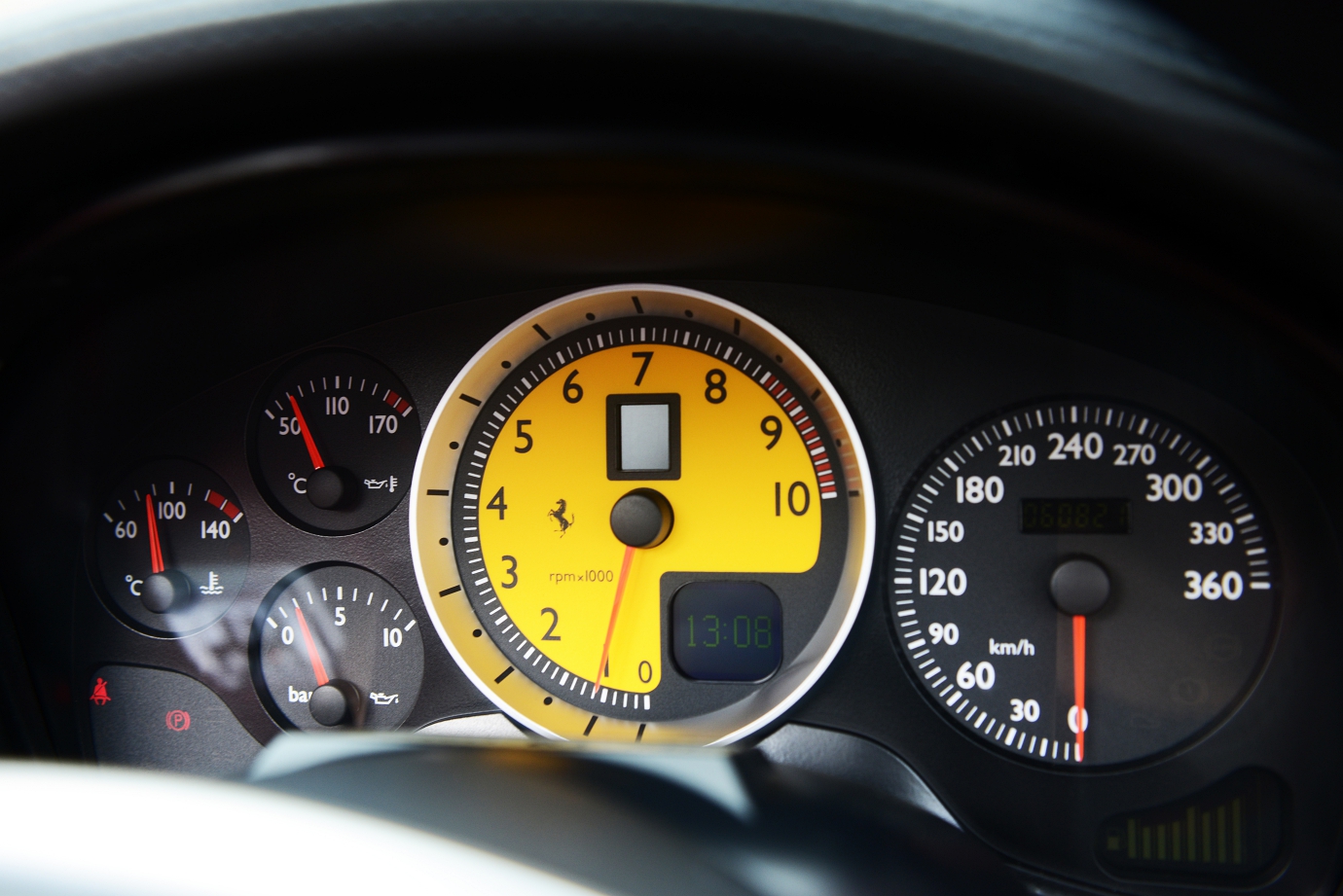
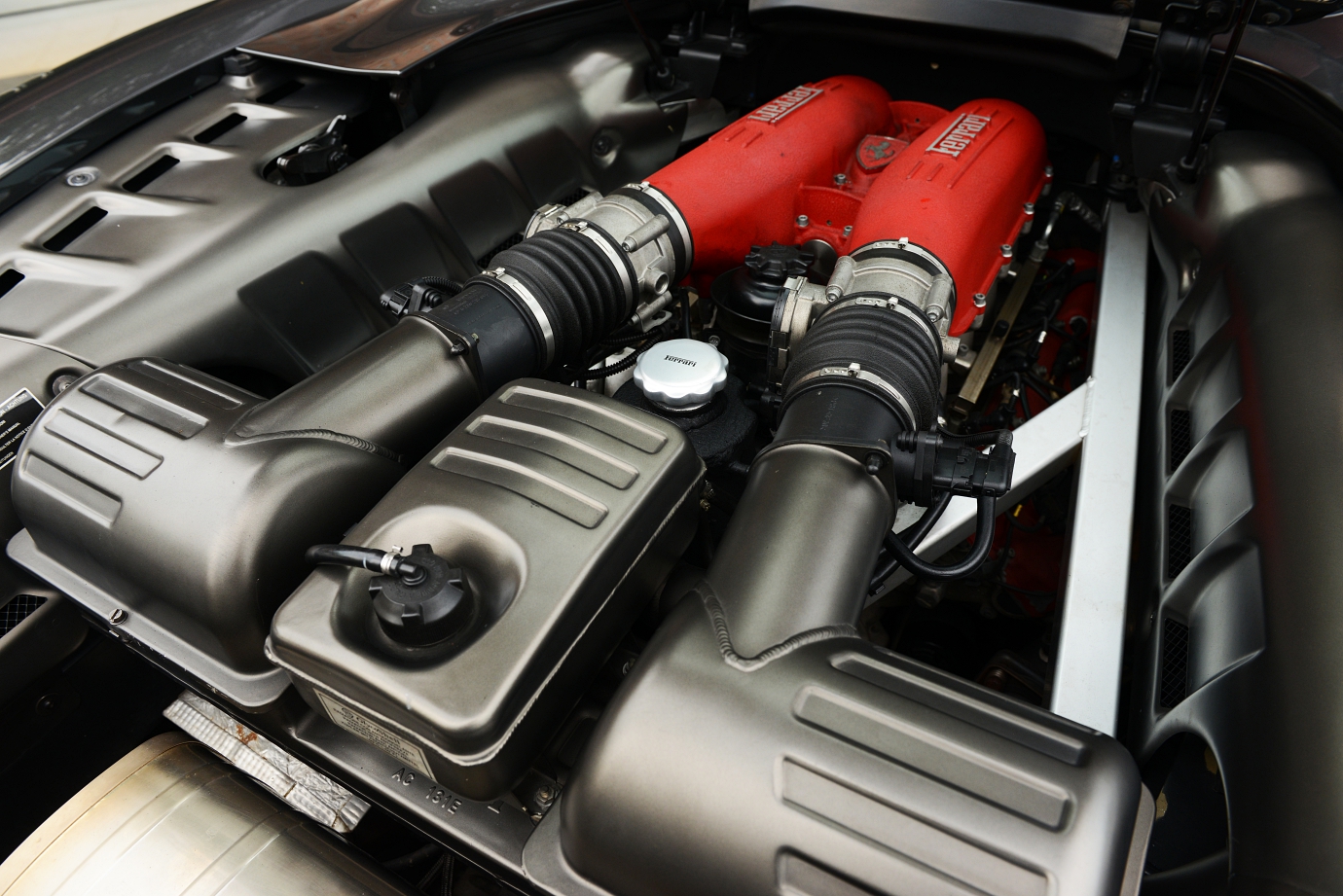
You can’t waffle about by slowly stirring the honey-pot, since it requires a firm and authoritative hand to ‘snickety-snickt’ the shifter into the respective gear-gates, even when you’re not pressing hard.
There’s an element to the car that will see it unsheathe its claws when driven under the cloud of the red mist, but it is otherwise content to mooch around as photo fodder for the local Exotic Cars Spotting chapter.
Short of the ‘F1SuperFast2’ semi-automated transmissions in the F430 Scuderia and the Scuderia Spider 16M and its 60 milliseconds shift-times, we’ve never been fans of the regular F1 transmission, since its 150 milliseconds shift-time is almost double the F1-SuperFast2’s, and isn't as involving as this stick-shift has proven to be.
Although the F430 Spider can be hustled along reasonably quickly with the manettino setting in Race, the pace is never furiously frenetic like the Scuderia or the 16M, which suits the nature of the 6spd manual to a tee.
However, for street driving, ‘Sport’ worked just fine, since the hair-trigger response of the gas pedal in ‘Race’ can prove hard to modulate in traffic.
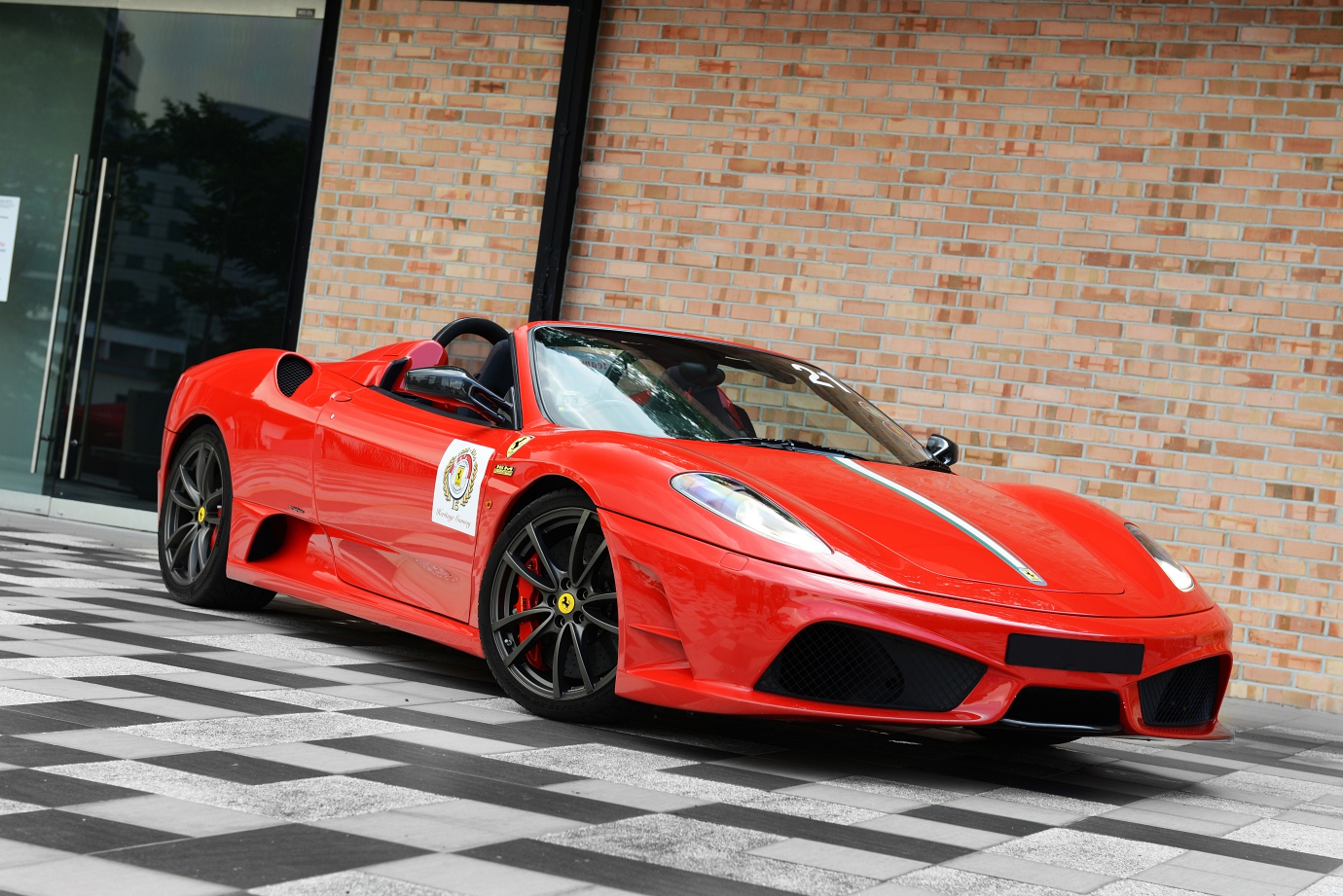
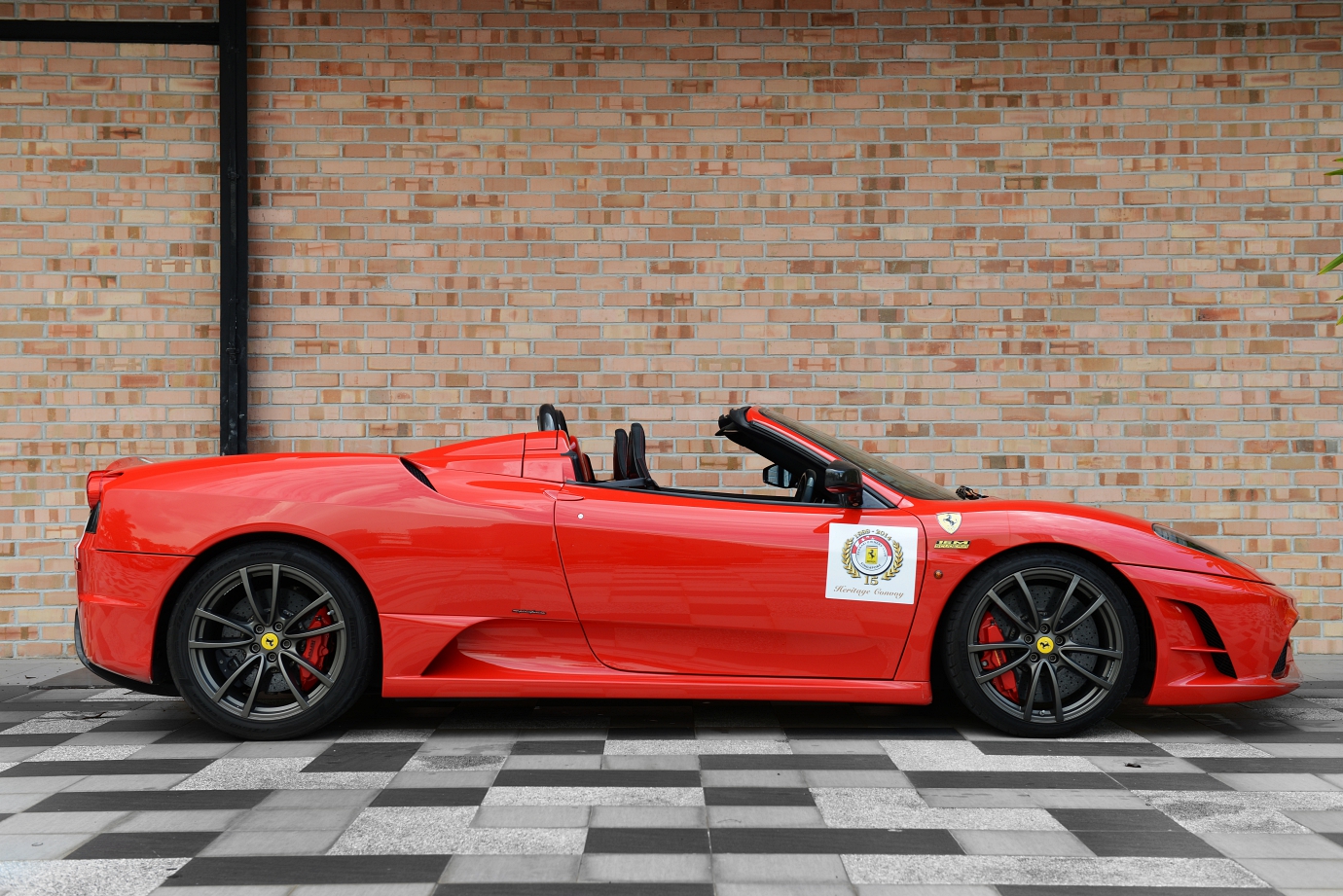
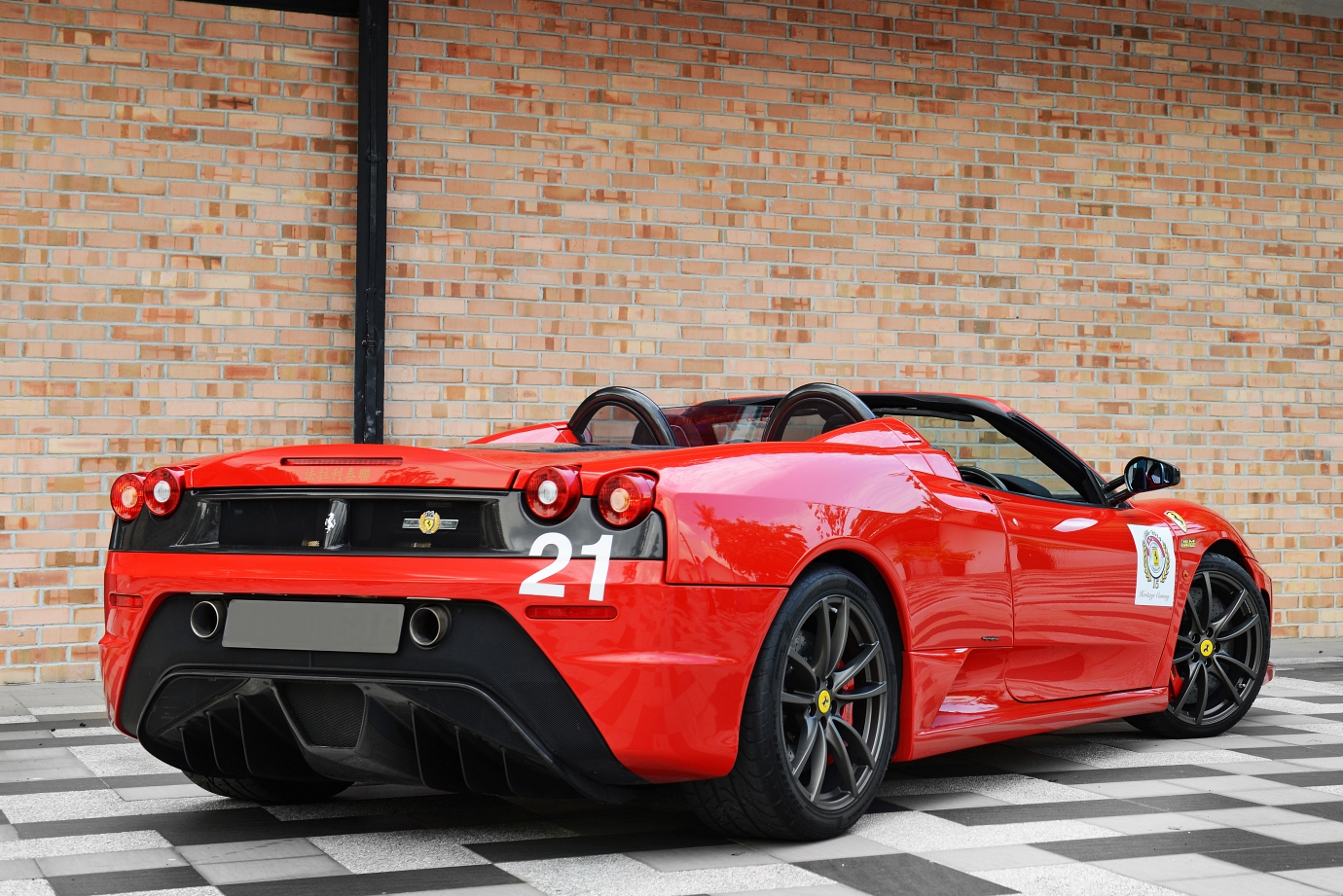
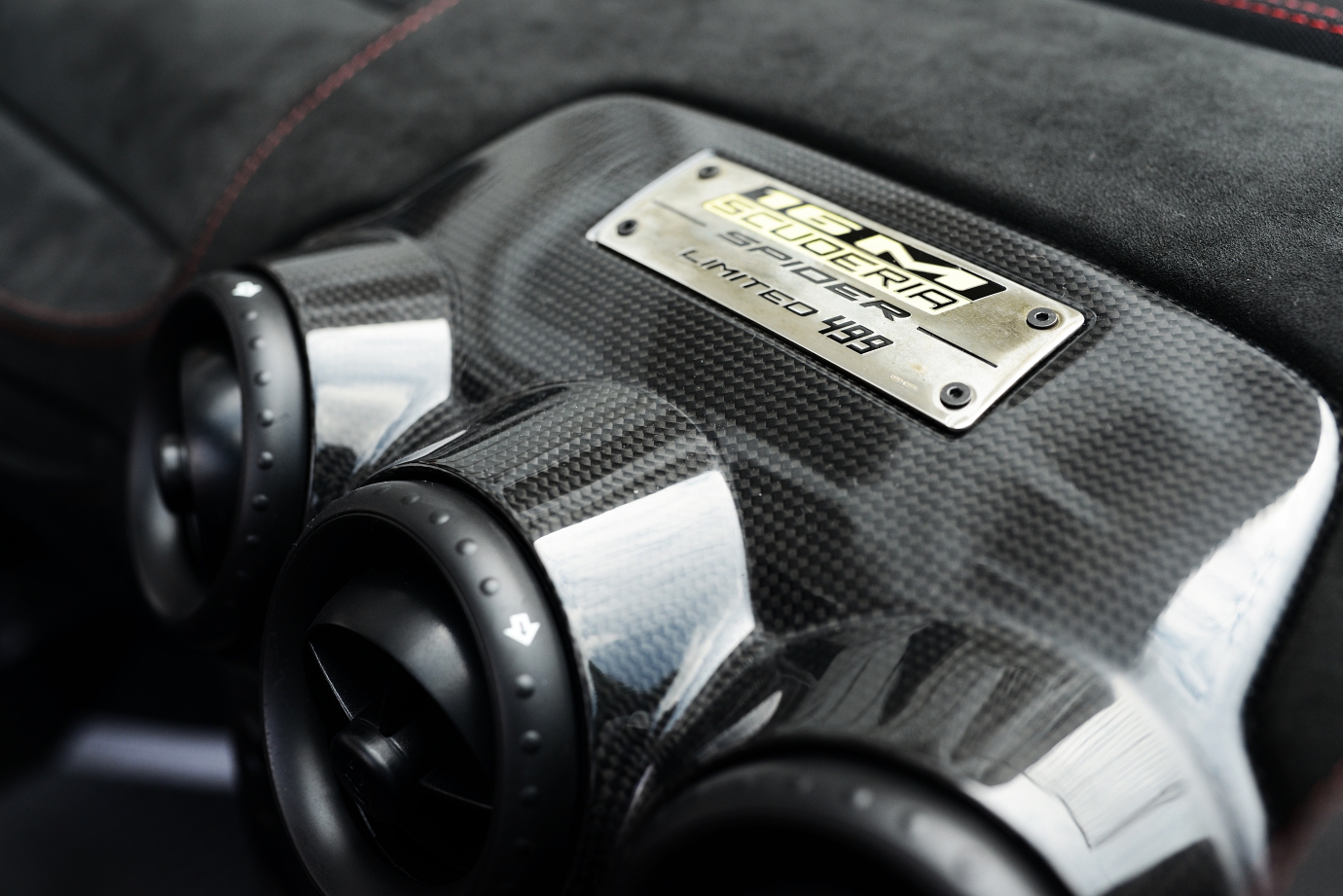
Scuderia Spider 16M
Limited to just 499 units and created as a rousing, grand finale send-off for the F430 model range, the Scuderia Spider 16M was presented to the world in celebration of Ferrari’s 16 consecutive F1 World Constructor’s title wins.
This drop-top inherits all the tasty bits from the lightweight fire-breathing Scuderia, and lets you appreciate all its aural and visceral majesty, which is even more intense when the roof is down.
(Click HERE to read about the 430 Scuderia, Challenge Stradale and 458 Speciale)
There are special editions and then there are Ferrari special editions. Owners of such rarefied road-going Ferrari models like the 430 Scuderia and even the (360) Challenge Stradale never have to worry that the brand will recreate models that are a mix-and-match of equipment and colours, or in other words, to flog a model till it becomes a, no pun intended, proverbial dead horse.
Of course, every successive replacement model that is launched will be faster in every way, but is it necessarily better?
Visually, the key to 16M recognition is clear once you know what to look out for. In fact, the visual cues are rather discreet, especially since the model is not one that is commonly spotted in the wild, with a tally of just three units in Singapore.
Apart from the emblems on the rear grille and flanks (just under the Cavallino shields), the 16M shares the same exhaust set-up and geometry as the Scuderia, which is itself inspired by the F430 Challenge race-car – this translates to tail-pipes that have been raised from the outward positions of the regular F430 and now protrude out closer to the centre of the rear.
Also, like the Scuderia, the 16M gets the distinctive 19-inch alloys and carbon-ceramic brakes as standard.
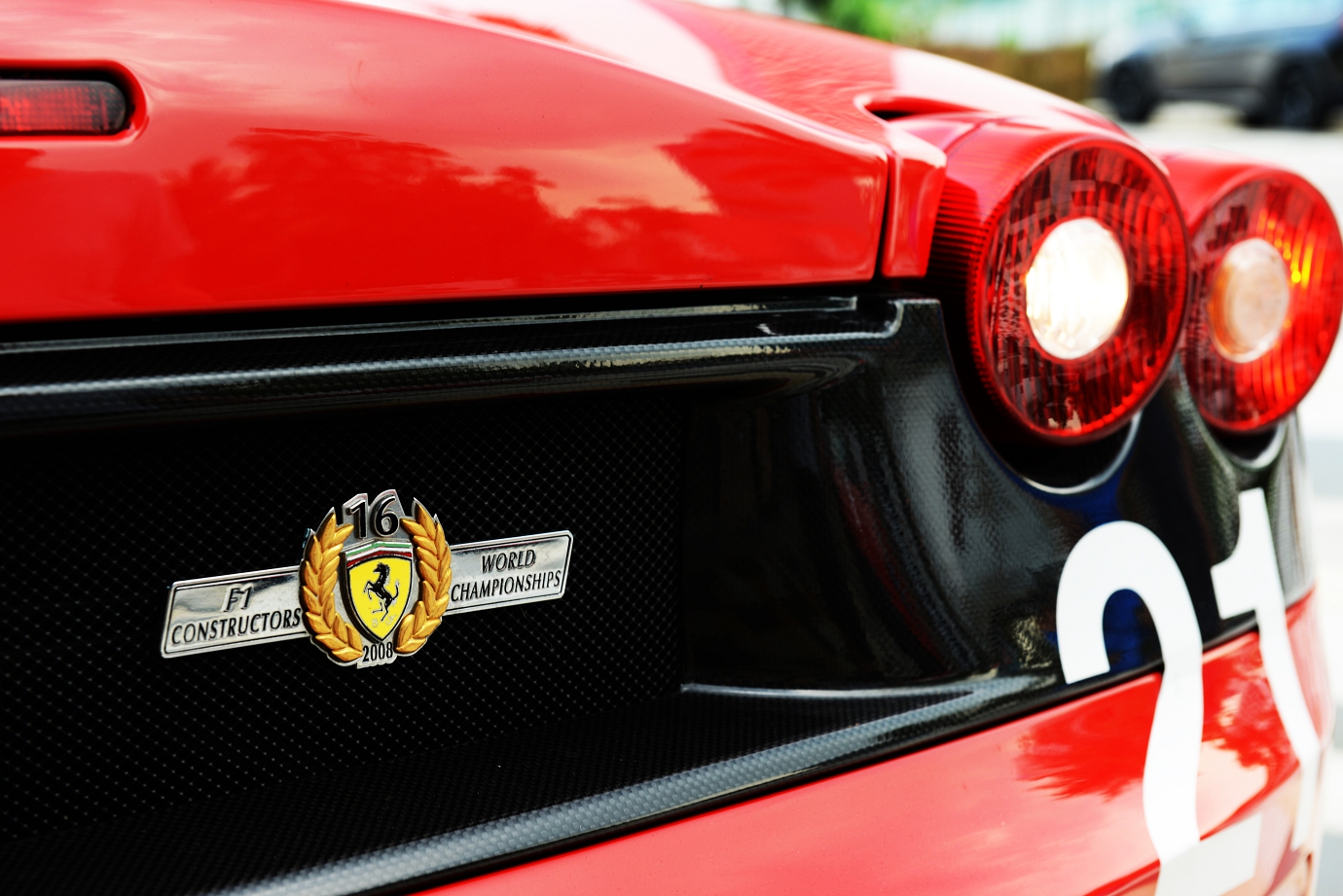
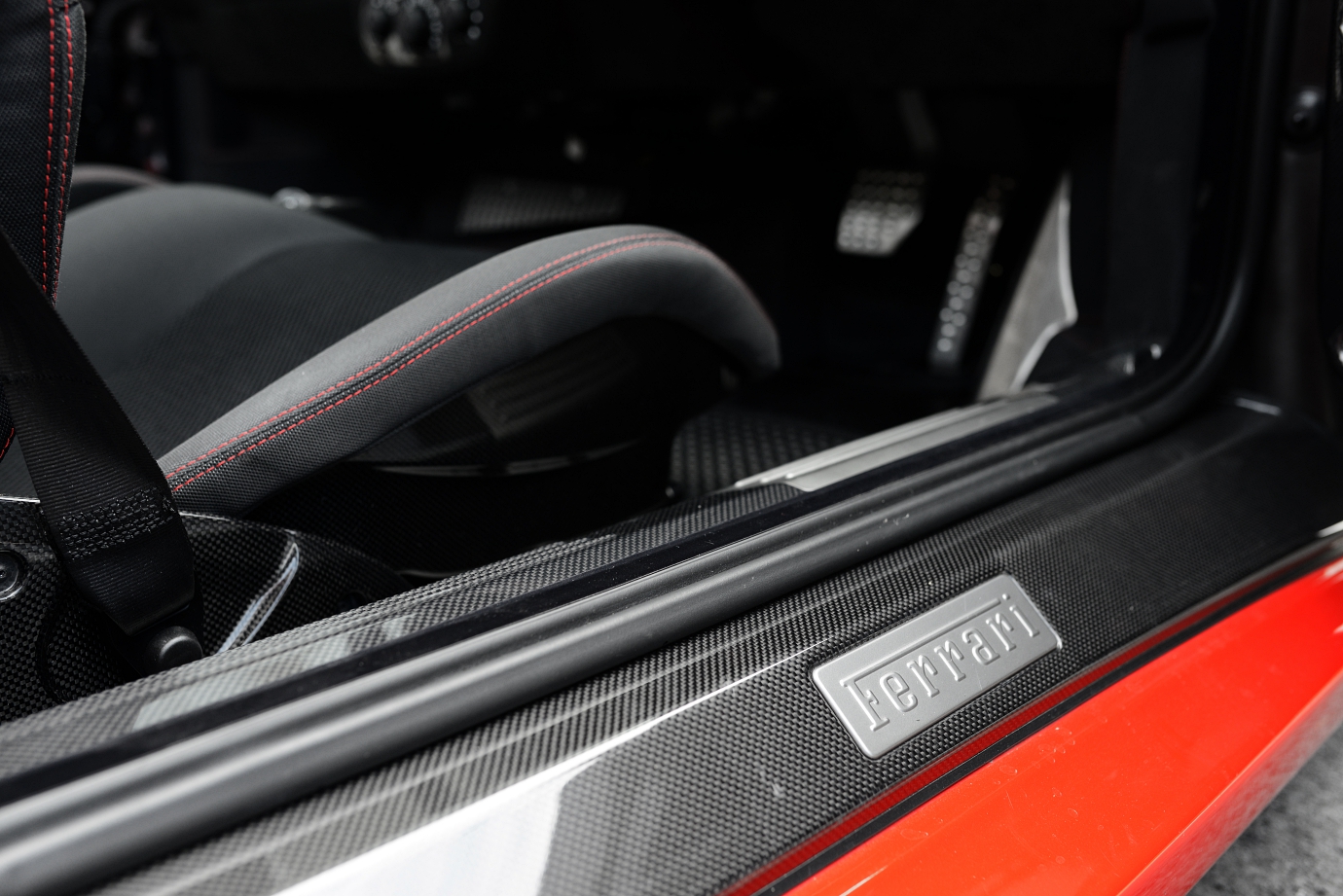
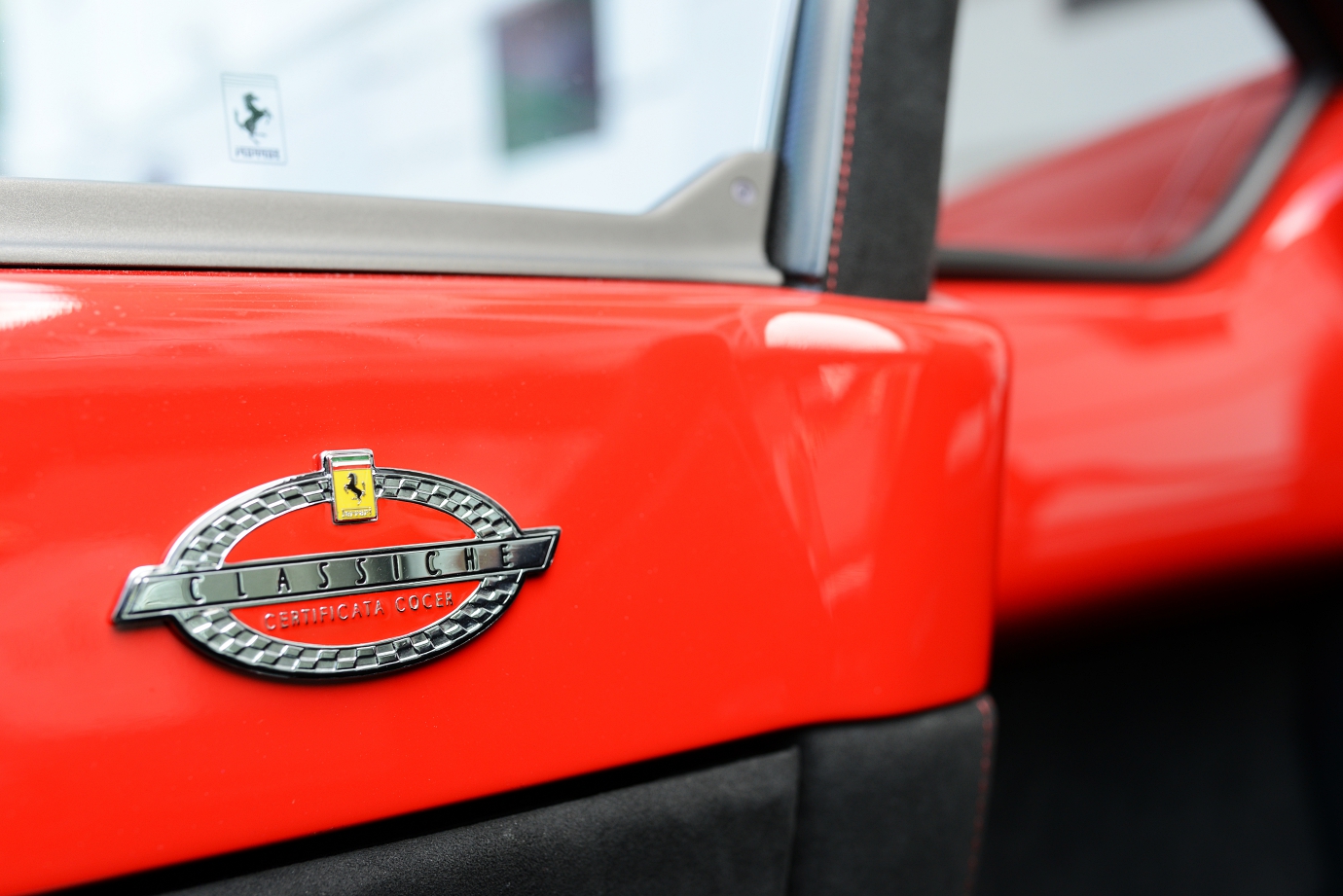
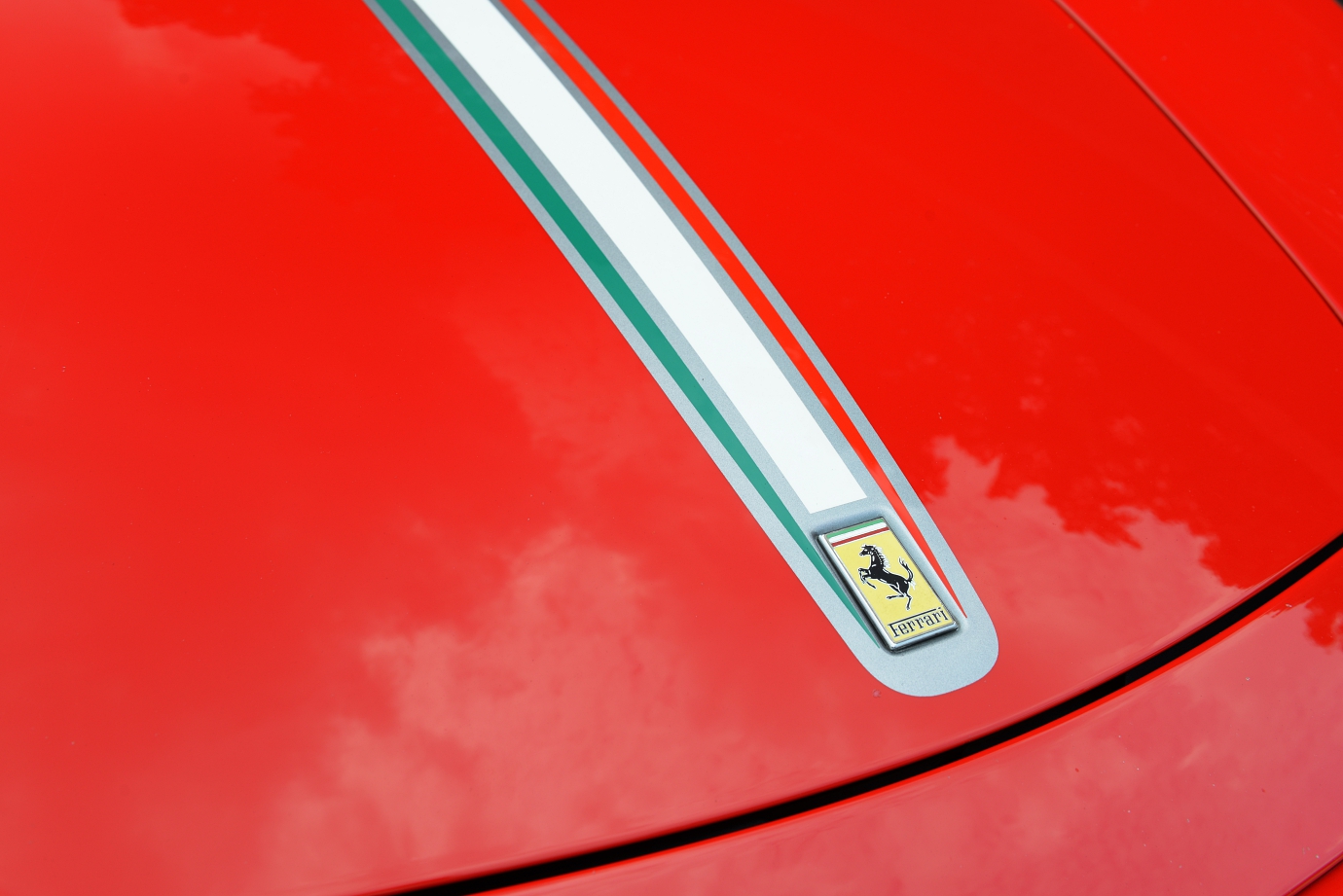
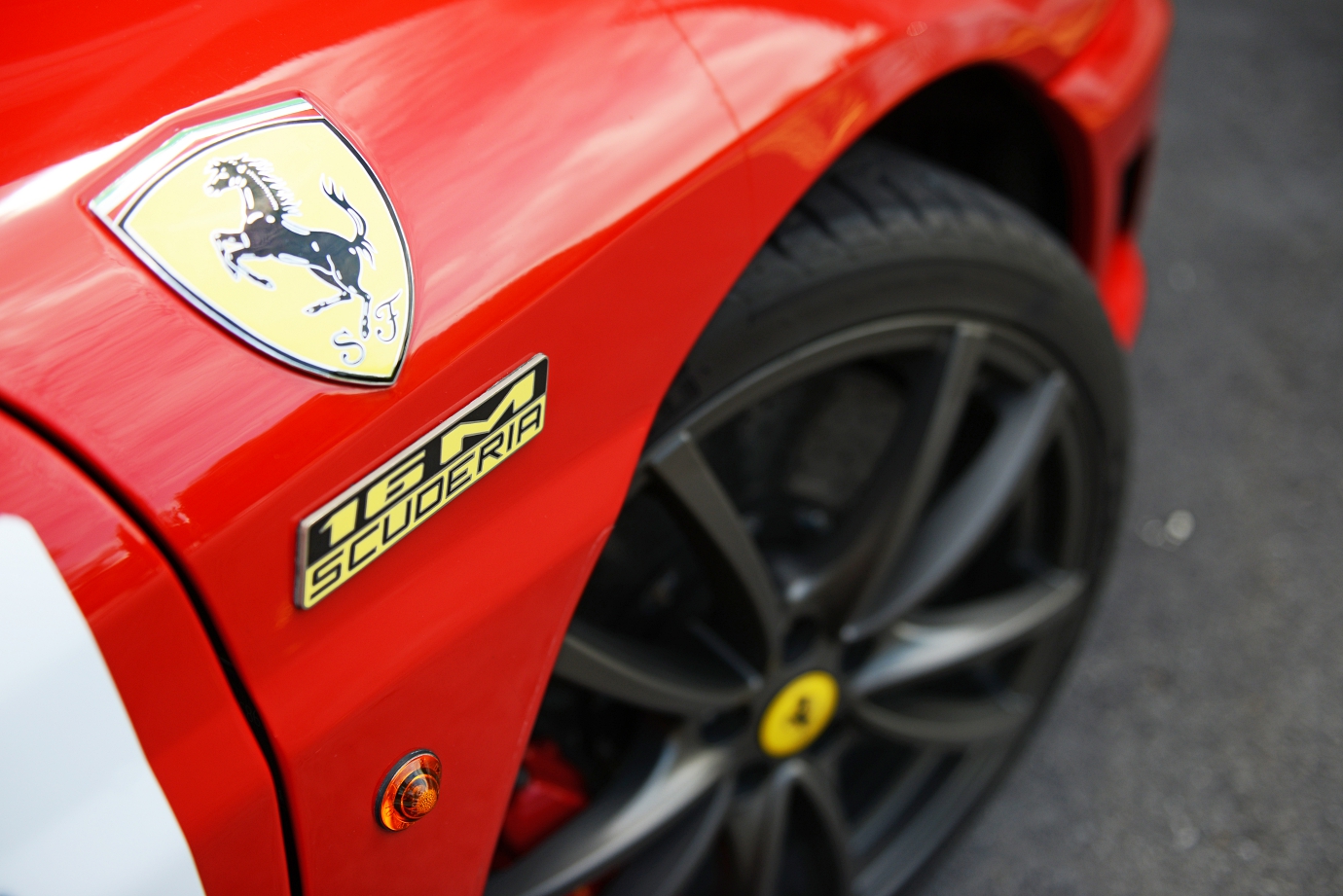
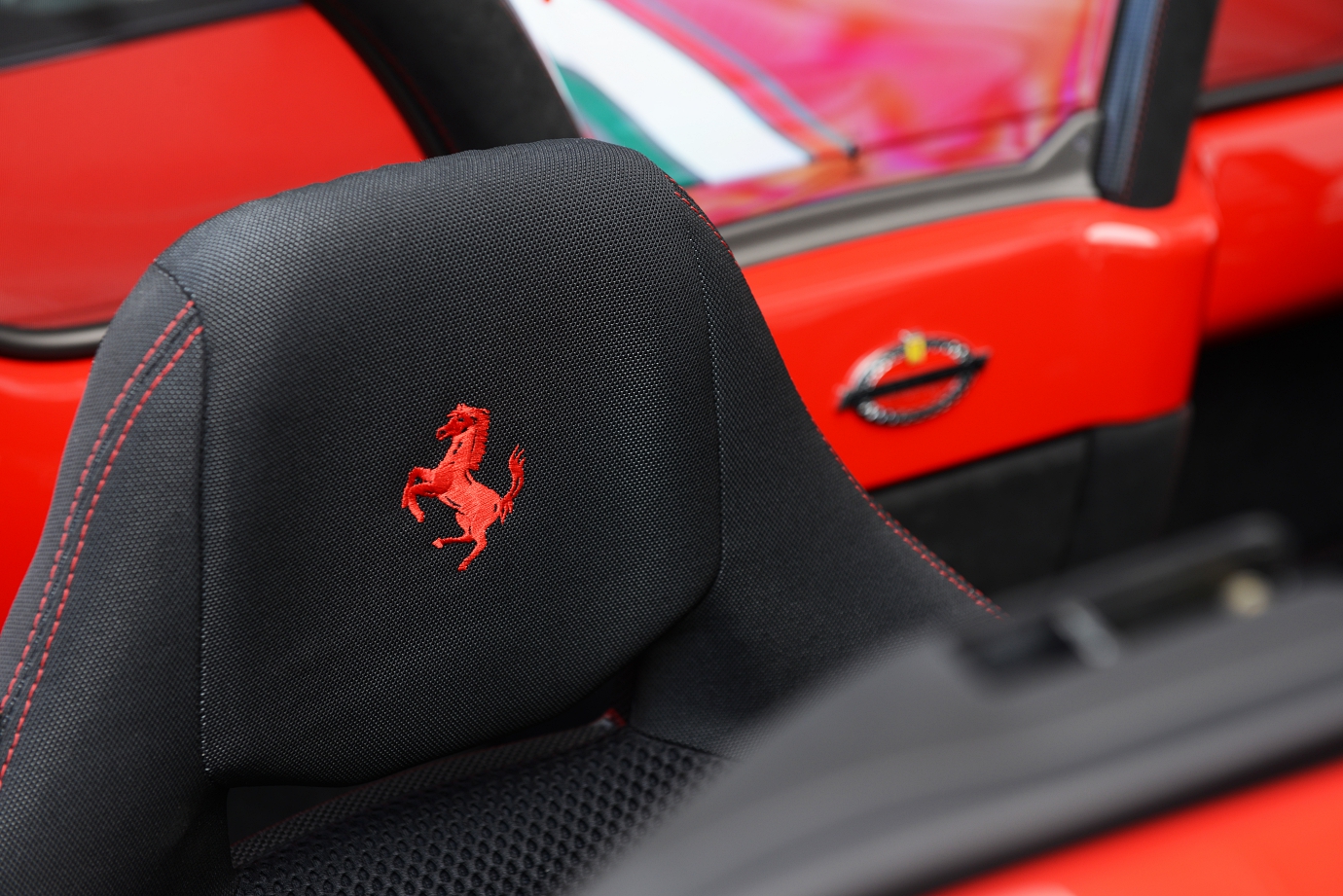
The owner of this particular car has a regular F430 Spider at home, and so the 16M comes out only for truly special occasions.
The mileage of this 2009 car is just over 4000km, which should mean the rorty V8 will start to become even sweeter as the miles go by.
By his reckoning, it is the only 16M in Singapore to be rated under the ‘Ferrari Classiche’ programme.
First a side-note, the Ferrari Classiche department not only restores classics, it also issues certificates of authenticity for historical road-going and race models of a certain vintage, or discontinued models of special significance.
Apart from the documentation, it also involves a technical examination to determine if the car is fully functioning and if all its mechanical, chassis and aesthetic components are original, or comply with the original specifications.
(Click HERE to read about our visit to Ferrari Classiche in Maranello)
Like the Scud, the 16M’s interior is no-nonsense all-Alcantara and carbonfibre, as befits a lean mean driving machine.
Roof-down, it’s even easier to appreciate the exquisite woven glory of the Super Racing carbonfibre seats, which can even be spec’d in different sizes.
Instead of plush carpets, there are just the two milled floor-plates and the iPod that came with the car to serve in-car entertainment duties is conspicuously absent… we’ll get to this in awhile.
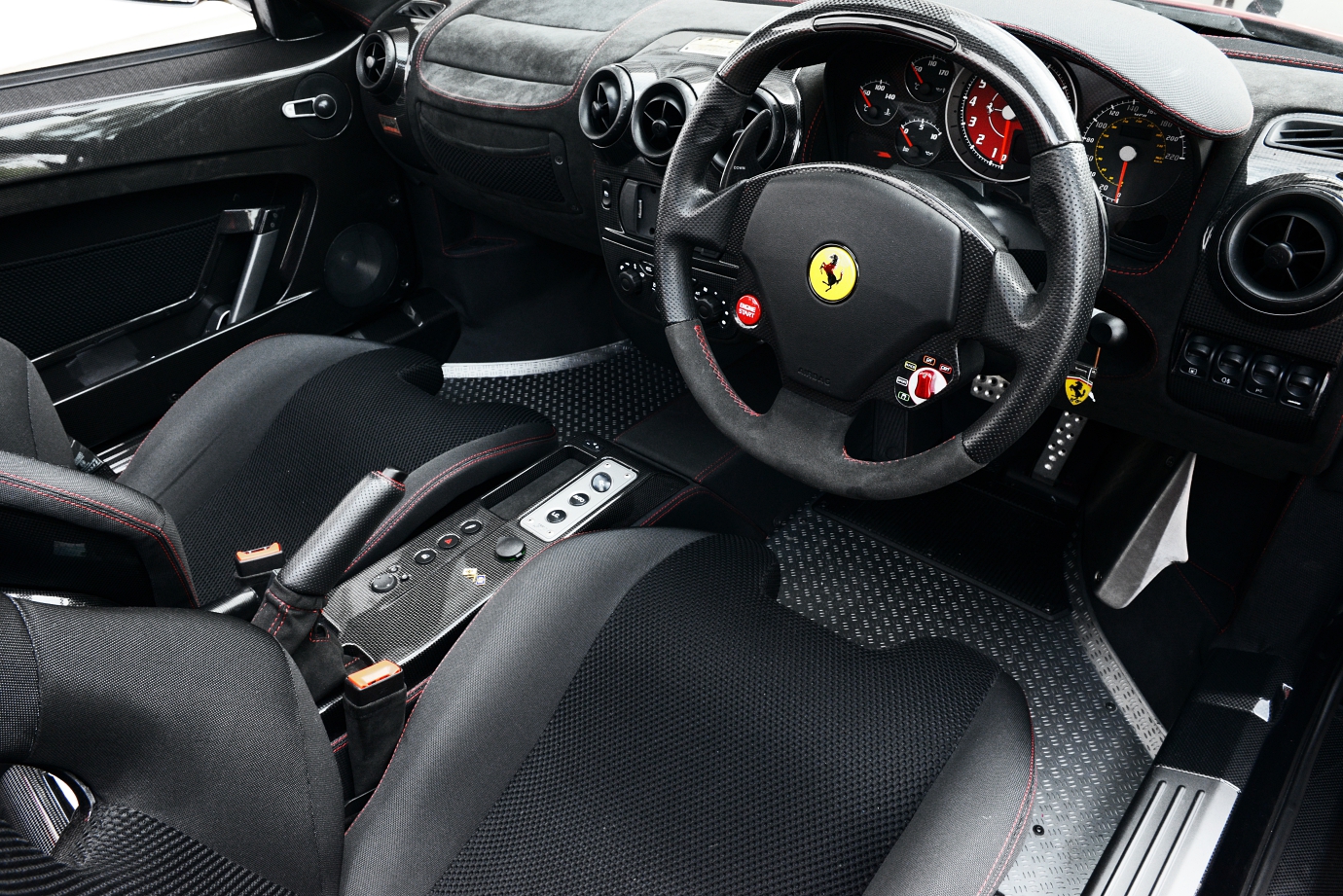
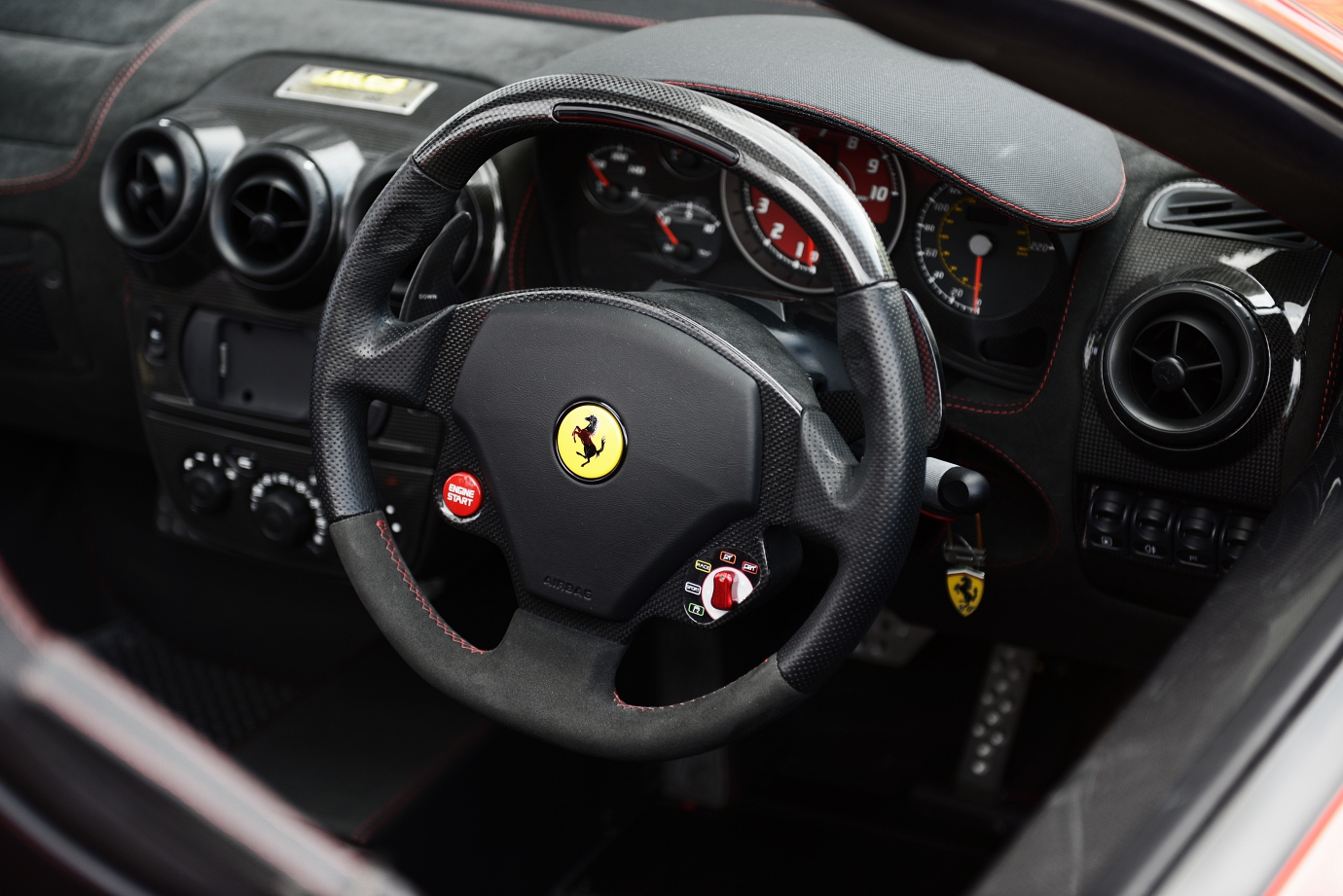
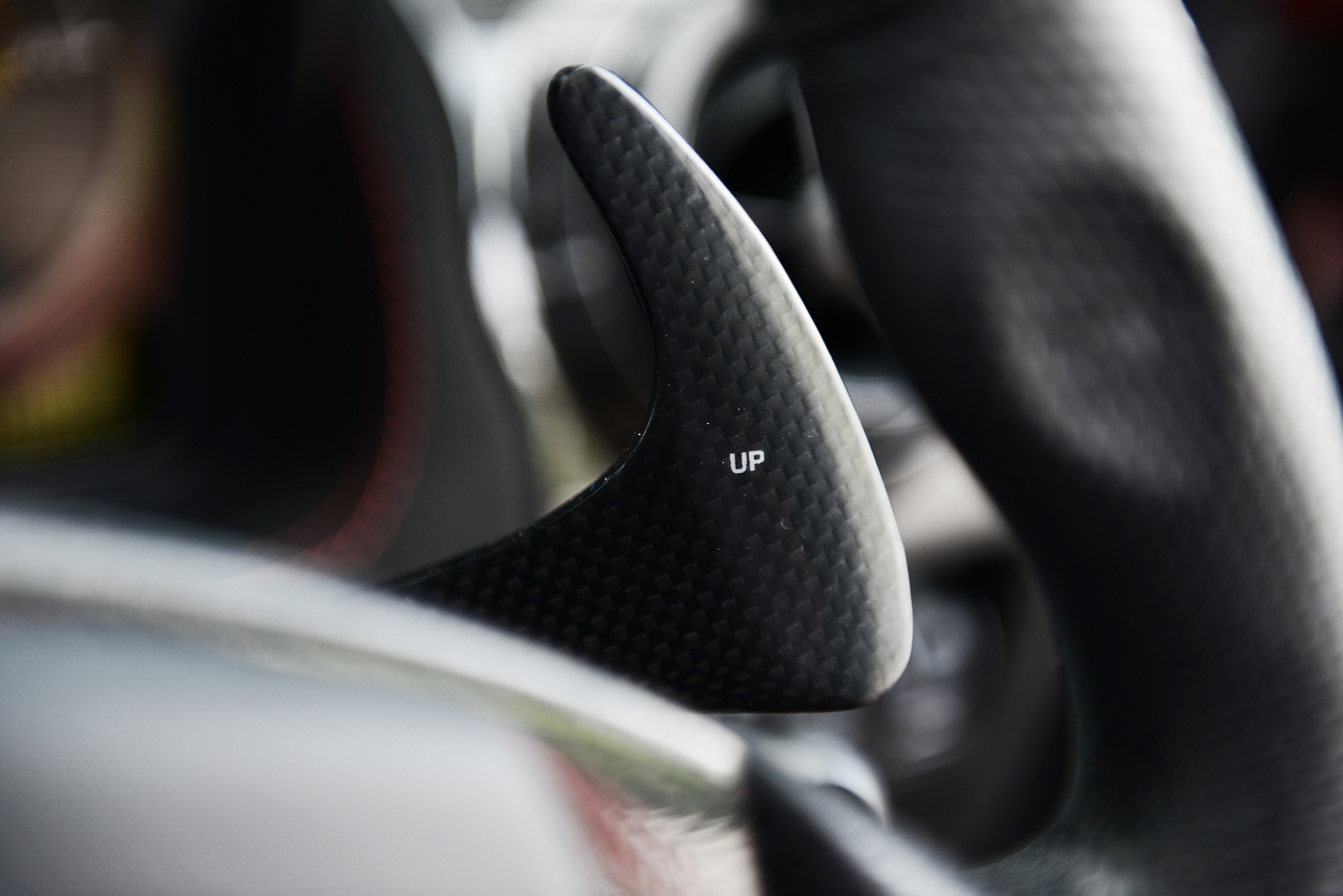
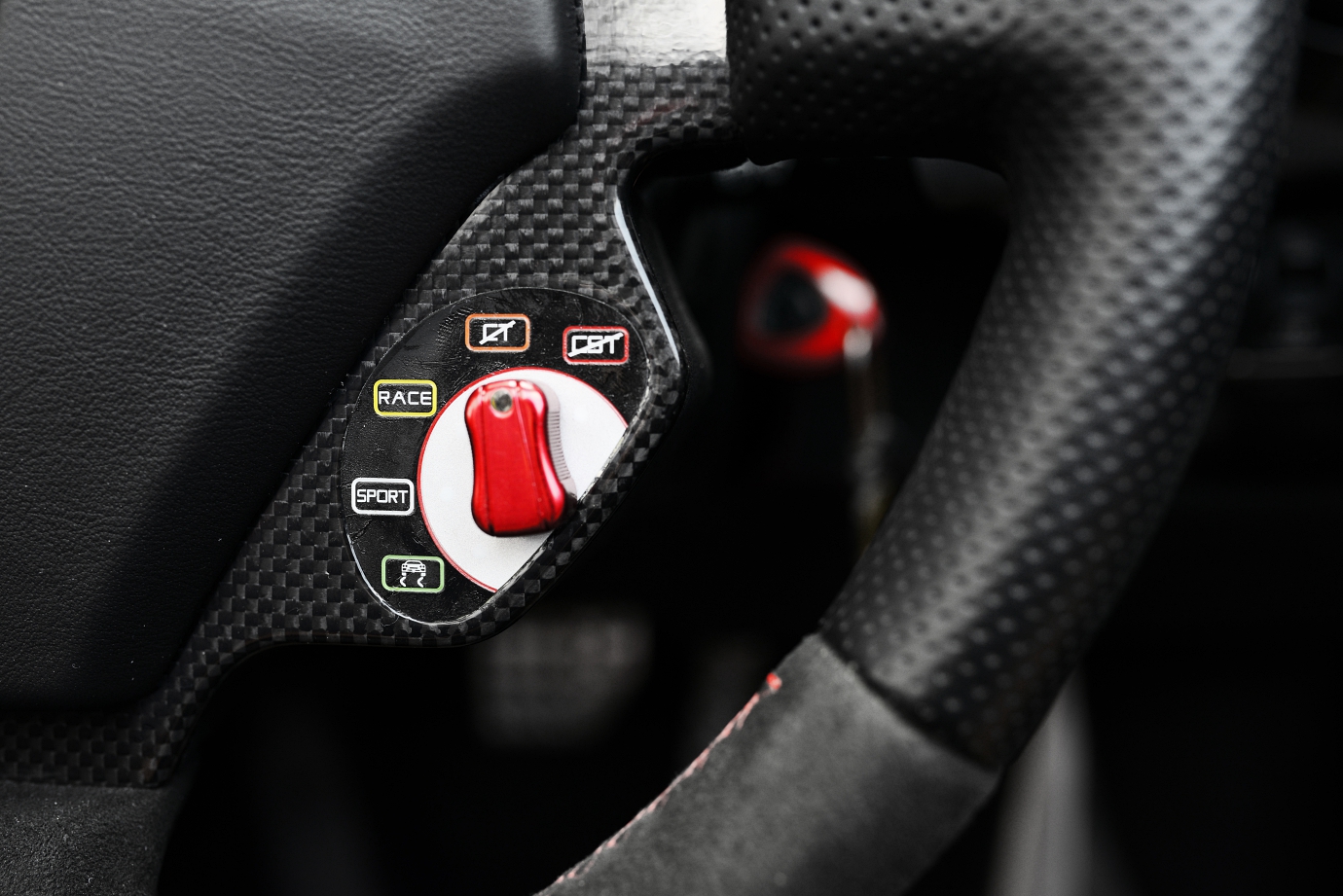
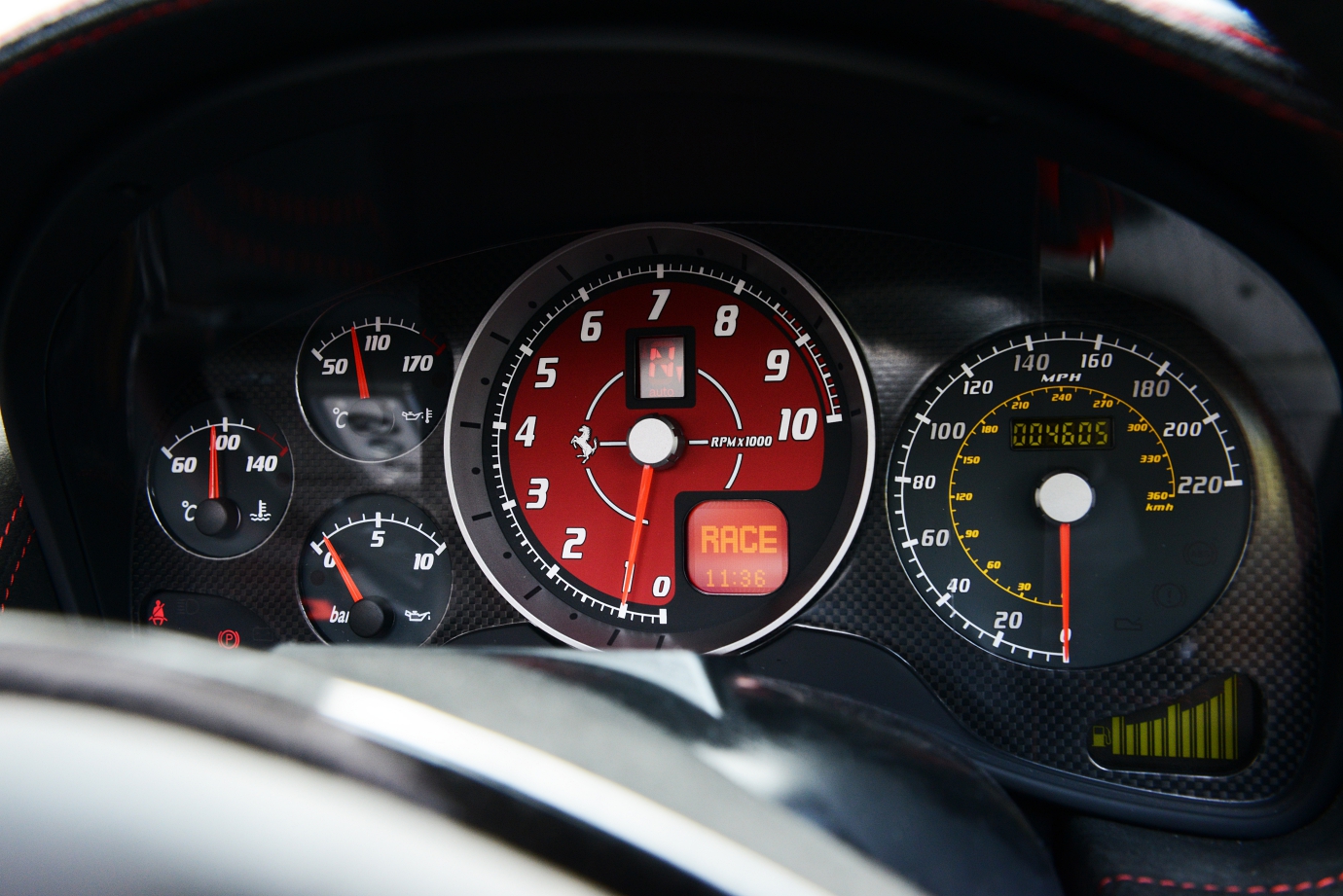
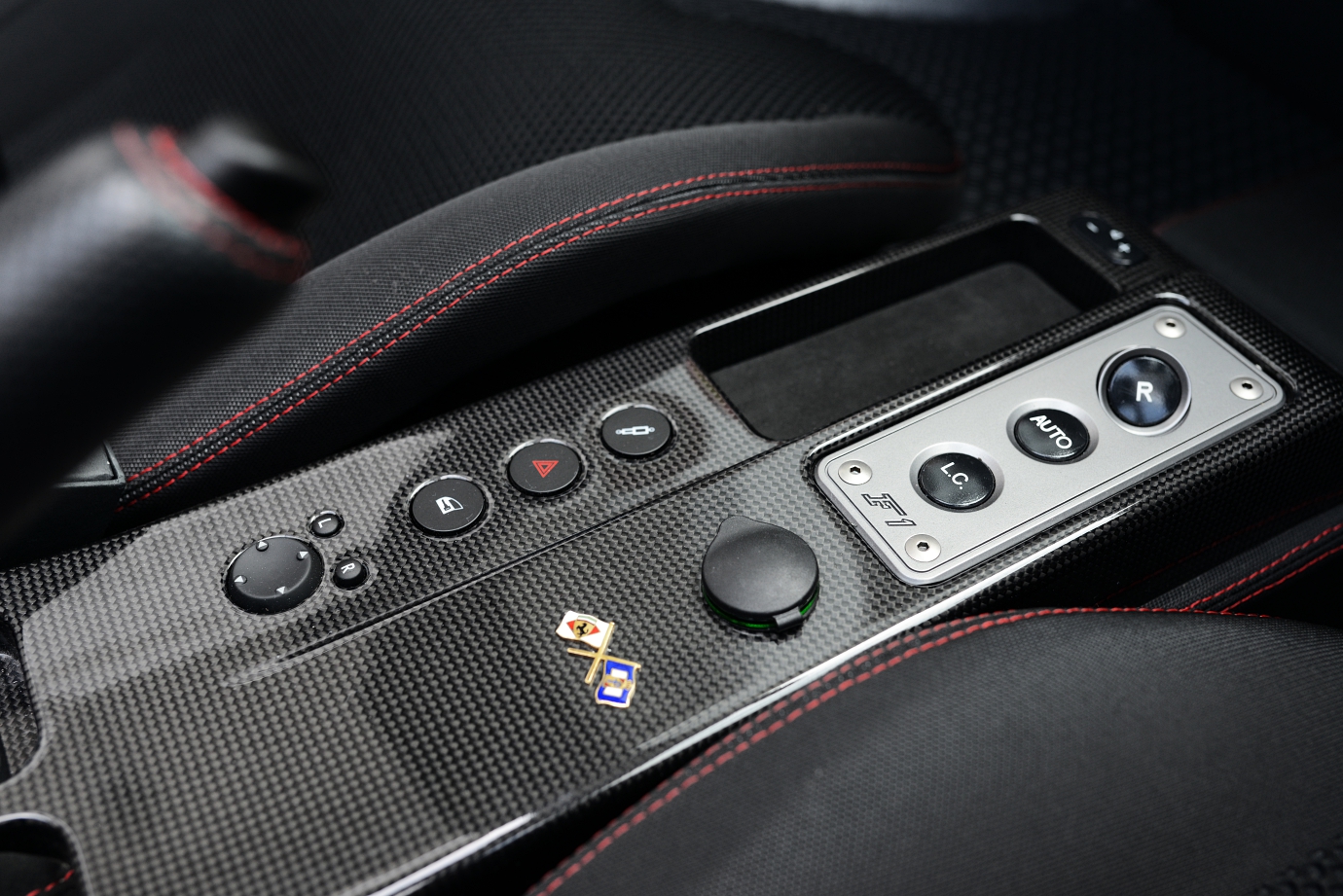
We’ve had the opportunity to sample a variety of Scuds before and we’re always blown away by the combination of its scalpel-precise frenzied ferocity, yet daily-use sensibilities, which made it a potent contender in all regards.
The earlier Challenge Stradale (or CS for short) in the 360's generation may have served up a more natural and organic drive, especially with its soulful exhaust note, but its shift-times are starting to feel long-in-tooth in the context of today’s cars; like the Scuderia, the CS was never available in stick-shift.
(Click HERE to read about our drive in the (360) Challenge Stradale)
With the top-down, the mechanical aural madness of the 16M’s high-revving V8 quickly explains why the owner didn’t bother leaving the iPod docked. With this sort of a soundtrack accompanying every drive, i would probably ditch the passenger as well, to cut down on chatter. Predictably, progress is dramatically explosive and the 16M reels you in hook line and sinker with every corner you dispatch.
With shift-times in the ‘bang-bang-bang’ 60 milliseconds region, we have no need for dual-clutch trickery, since the SuperFast2 retains a modicum of involvement during shifts, with the paddles working as docks for your two palms that transmit the rapture to your entire system.
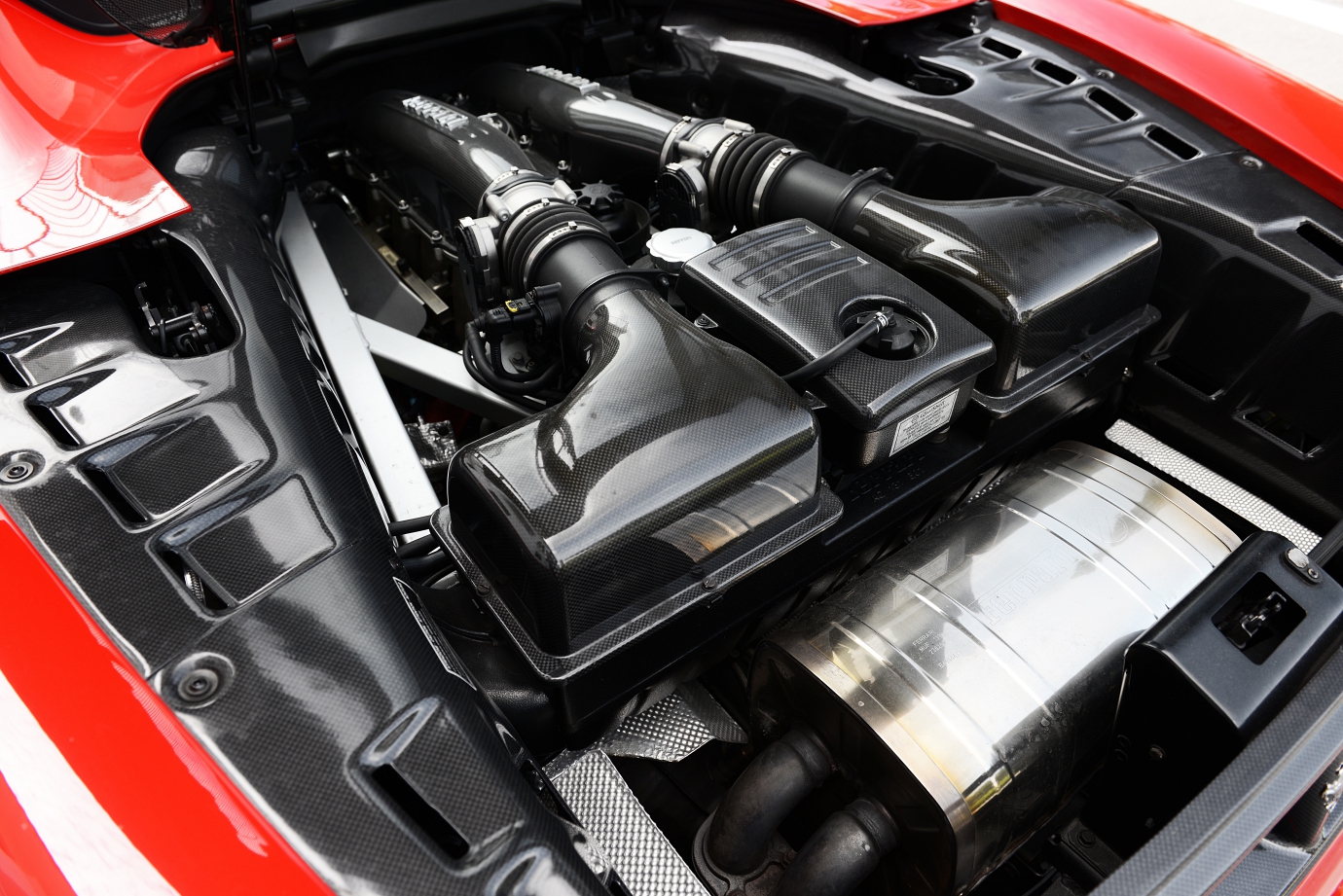
Although the sound is often criticised as being too mechanical in contrast to the CS’, the 16M never pretends to be a genteel soul. There’s no turning-the-other-cheek with this brute, which will happily initiate a smack-down under the slightest provocation and goads you into hard runs with every trip – even if it’s just a pop-down to the shops for eggs (trust us, the broken eggs will be well worth it, since you can always make the trip again!).
The Scuderia Spider 16M inherits all the tasty bits from the lightweight fire-breathing 430 Scuderia, and lets you appreciate its aural and visceral majesty, which are even more intense with the roof down.
From within, the exhaust note never threatens to overwhelm the senses of the occupants, but we’re told that the sound of the V8 working its way up the scales displays a varied tonal range that culminates in a F1 like scream. The balance is wonderfully neutral, with the kind of sharp agility and confidence-inspiring traits that characterises mid-engined cars.
Even in the midst of all the mechanical turmoil that is assailing one’s senses, you quickly learn to detach yourself from the maelstrom of extraneous sensations to achieve a Zen-like calm as you concentrate on the joy of flogging this horse hard.
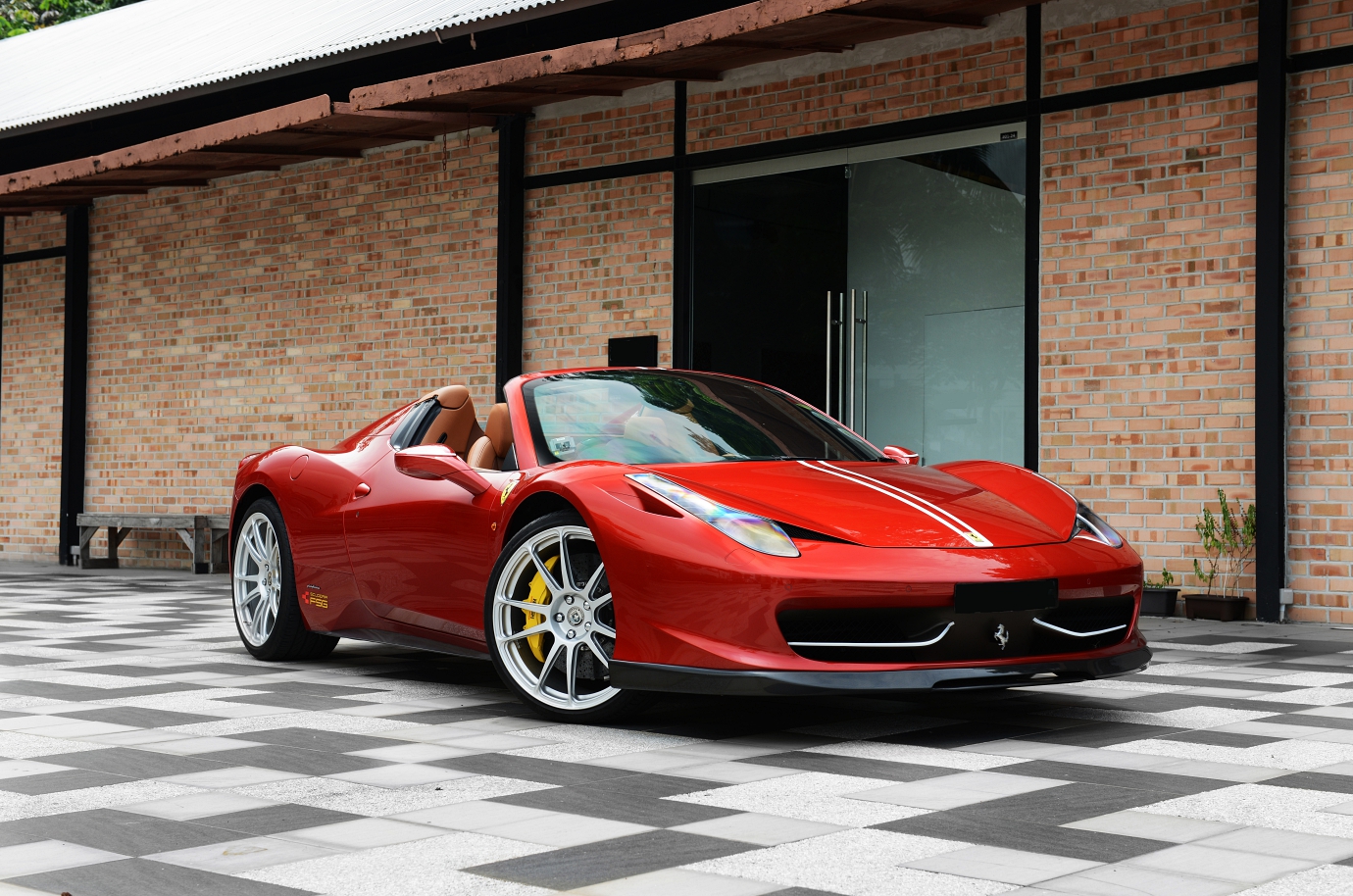

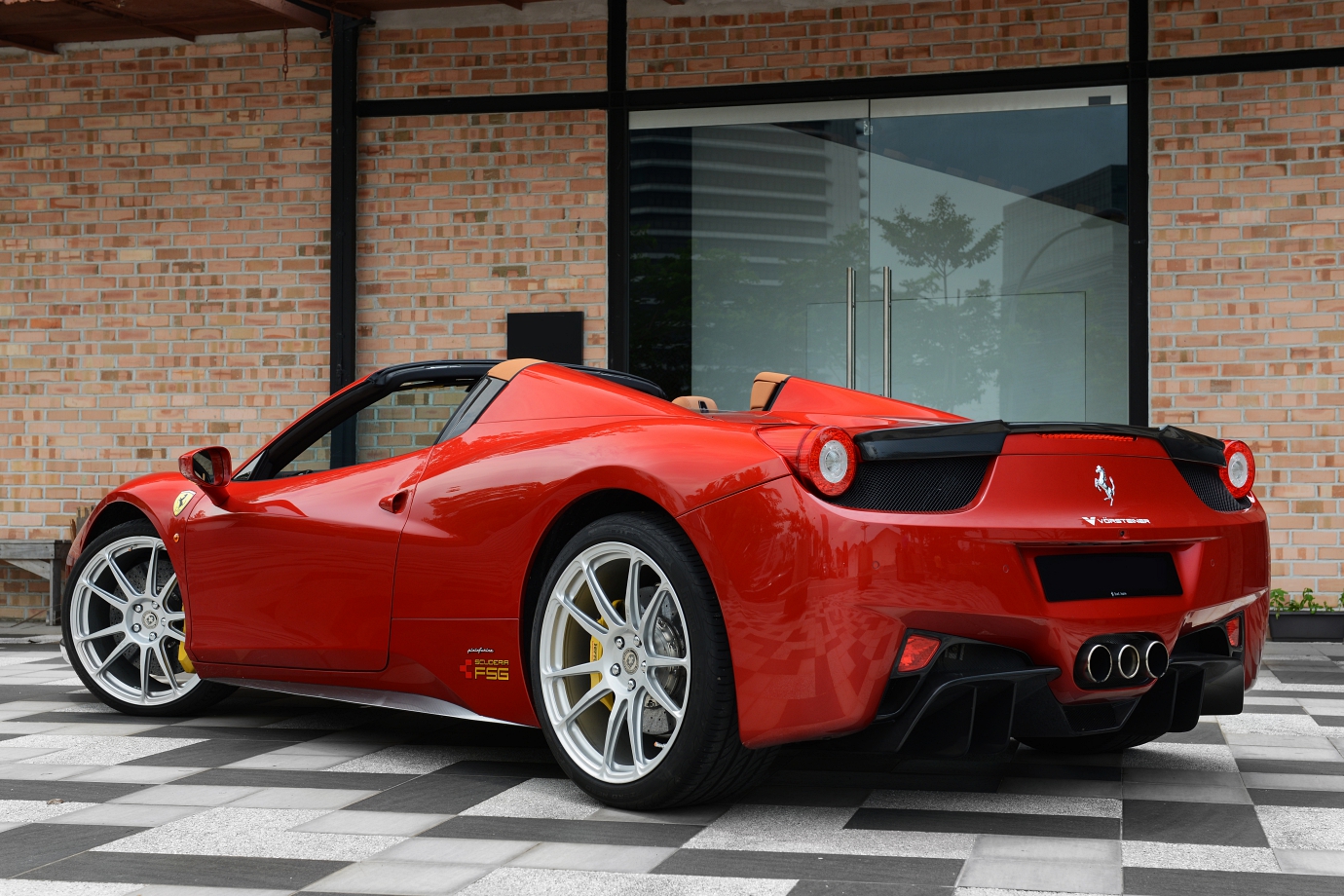
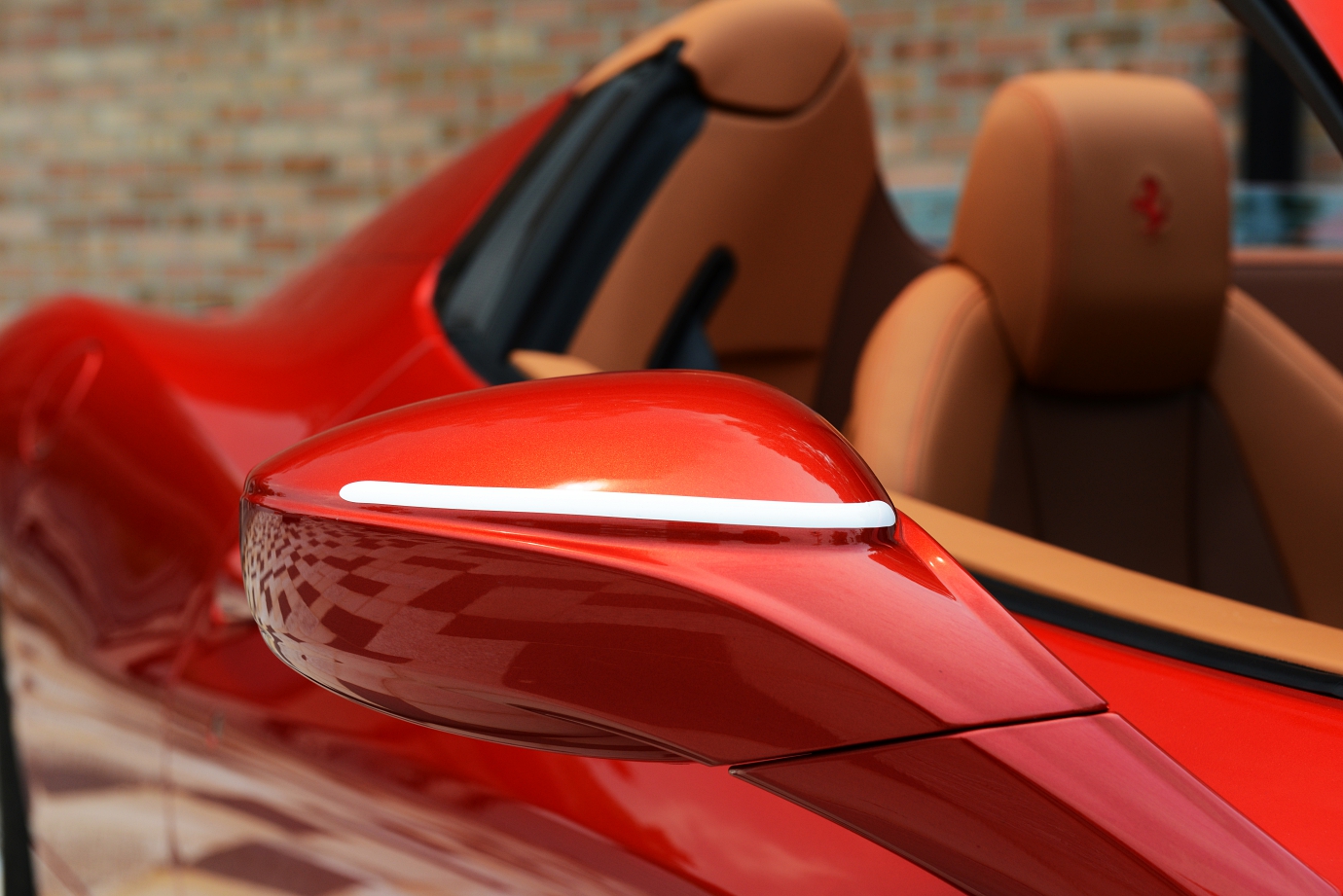
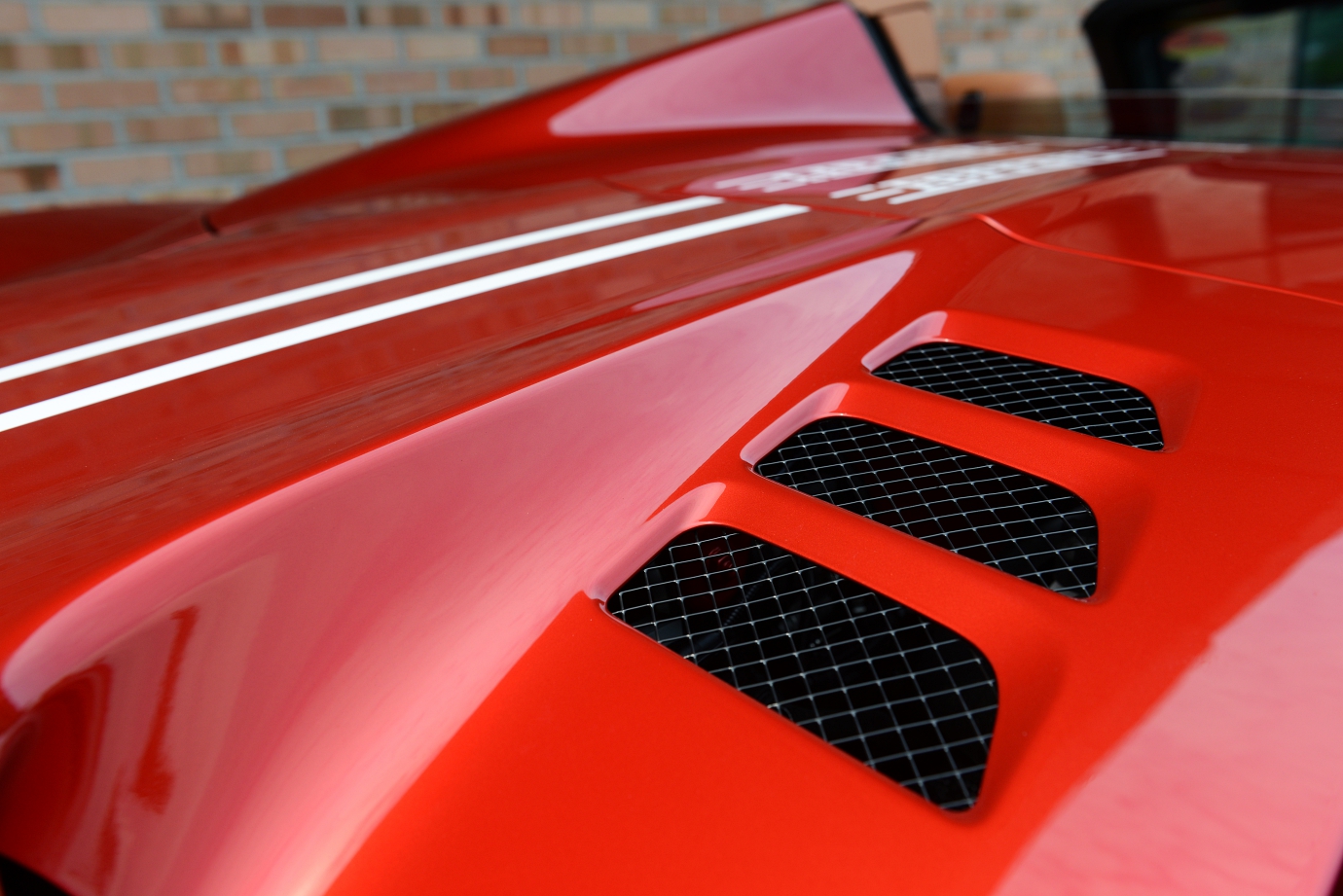
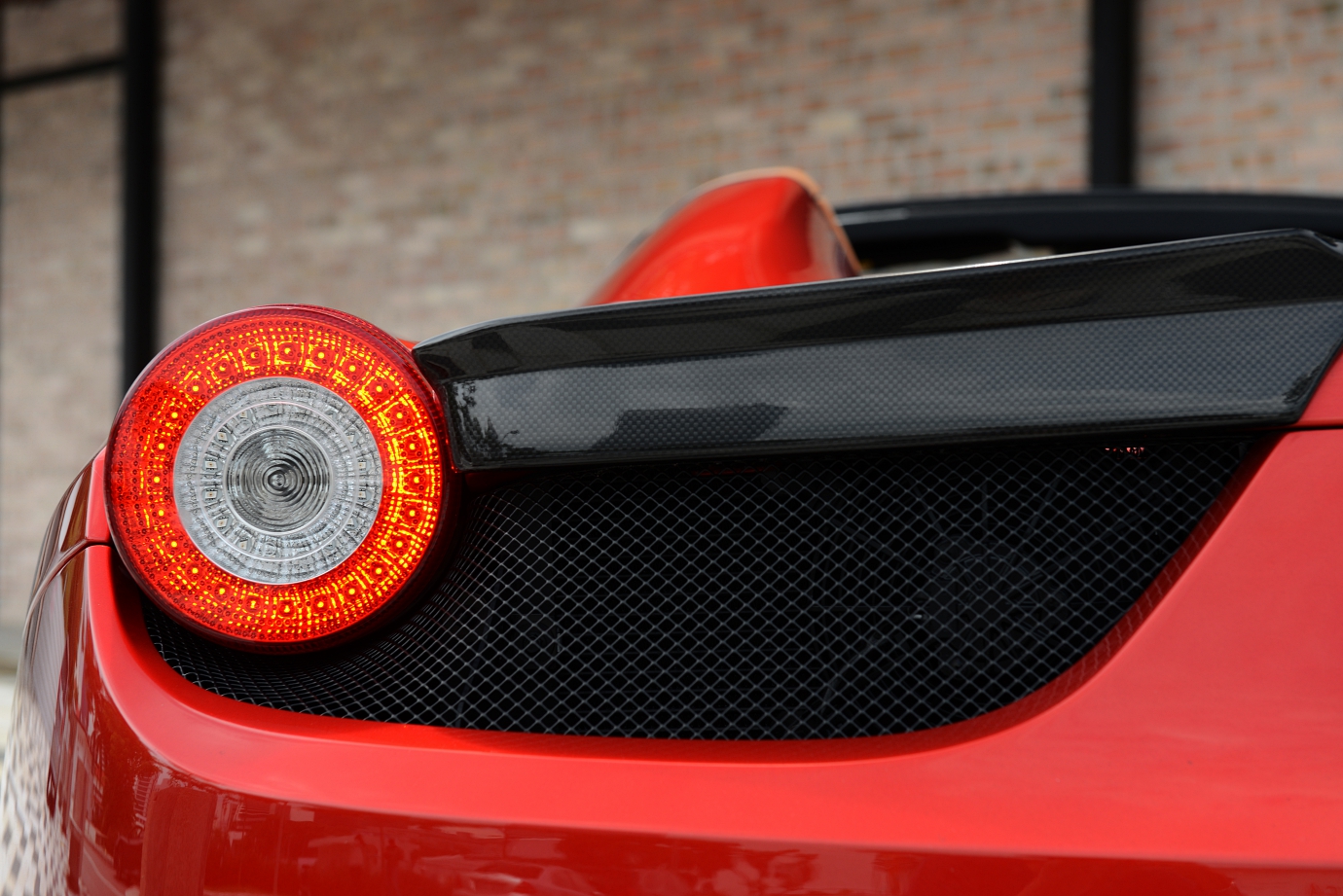
458 Spider
The current successor to the ‘Spider’ name is the 458, and is the first to feature a retractable hard-top in place of its predecessors’ soft-tops. However, that’s not the only big change, since unlike the 360 and F430 Spiders, there’s no exhibition glass back through which to ogle the naturally-aspirated V8, which could well be the last of its kind.
It does have, though, gorgeous flying buttresses that gave the car a distinct visual identity. Like its Italia counterpart, the 458 Spider features a 7spd F1 dual-clutch transmission that serves up lightning quick shifts.
Like the Italia, there’s a plush fineness to the Spider that seems far removed from the no-frills, almost feral atmosphere of the 16M and F430 Spider – this, of course could change if/when the 458 Spider Speciale is announced.
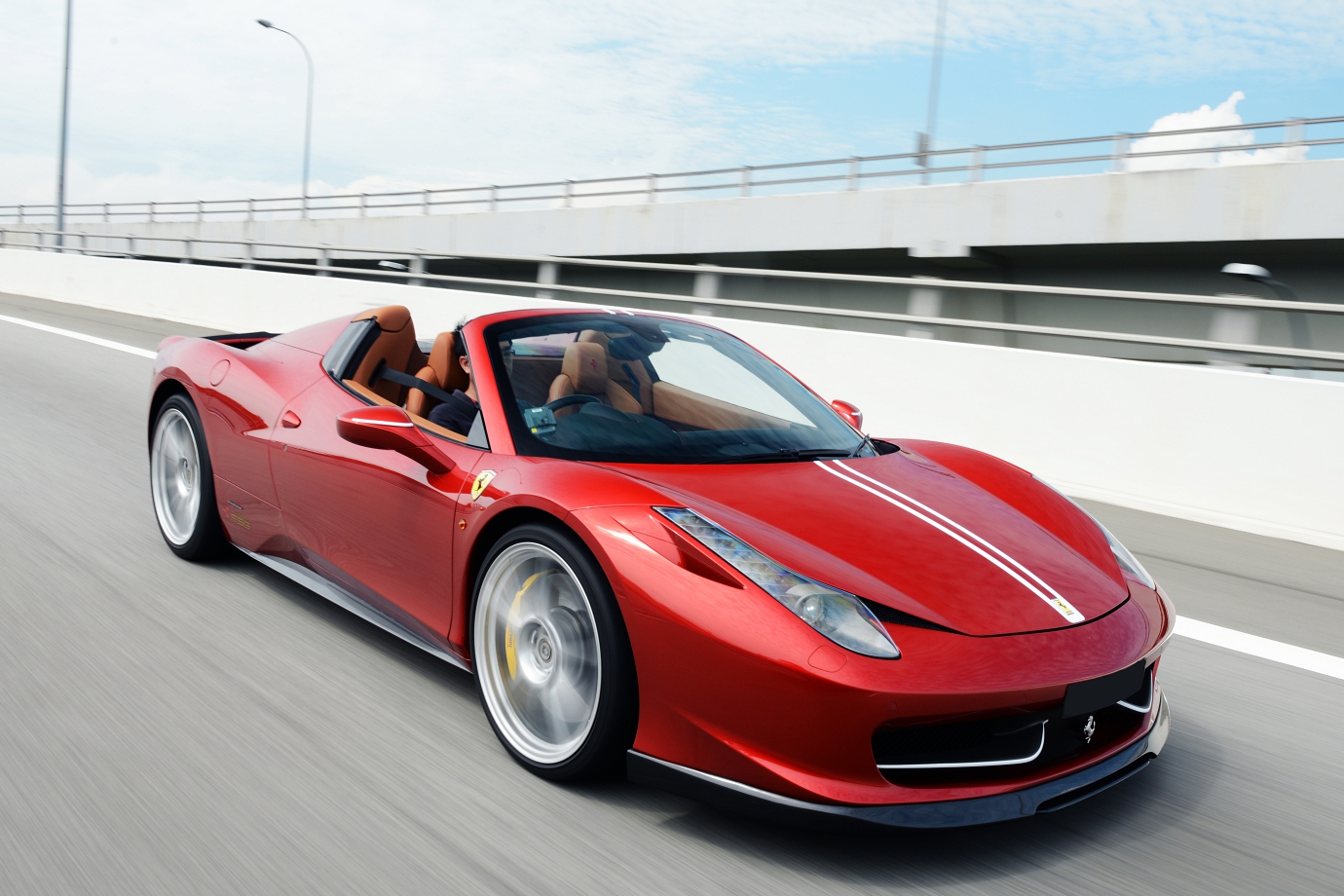
As far as the normal 458s are concerned, the list of customisation options now includes a Ferrari Tailor-Made programme, where the only limit to your unique bespoke Ferrari is your cheque-book.
Ferrari tells us the 458 Spider’s roof is made entirely of aluminium and will deploy in just 19secs. Furthermore, it weighs 25kg less than its soft-top counterparts and is designed to fit neatly ahead of the engine-bay without compromise to aerodynamics or performance.
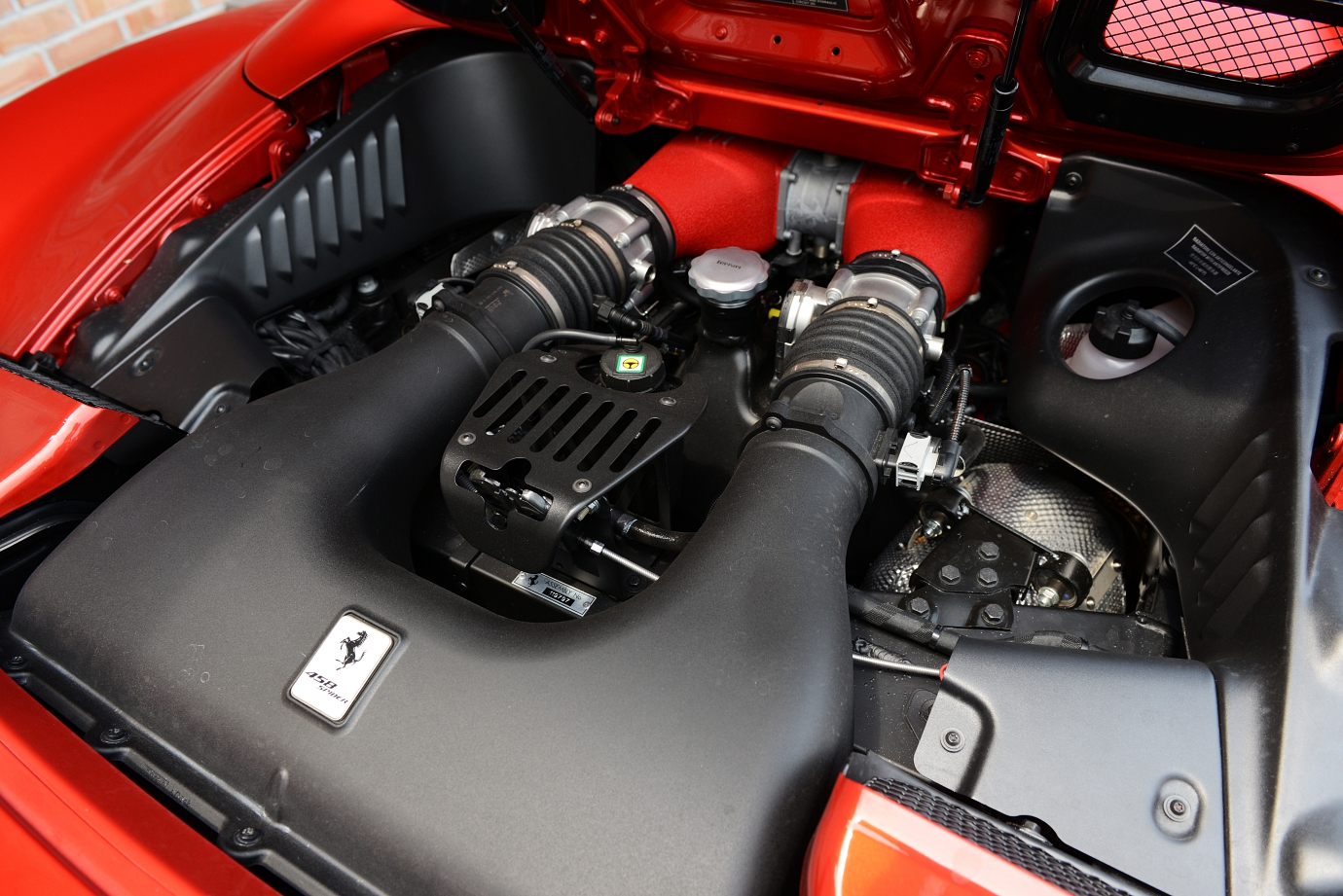
Compared to the F430’s 4.3-litres, the V8 at its heart now approaches 4.5-litres, with a corresponding spike in performance figures. Like its Italia sibling, the 458 Spider is a doodle to drive in town, with great visibility and a useable power-band – it’s only when you want the fireworks that it will respond with catherine wheels, aerial salutes and roman candles galore in an explosion of sound and speed.
The exhaust actuation was a particular bug-bear with the 458 Italia, especially in the on-off manner in which it cut in and out depending on gear/throttle position. The actuation seemed almost too hair-trigger sensitive compared to the very natural swell that would accompany the truly mental, raging soundtracks of the 16M and Scuderia.
On the Spider though, it’s easy to tap into the car’s performance, since it morphs from dandy to devil in the time it takes for you to prod the gas pedal increasingly into the metal.
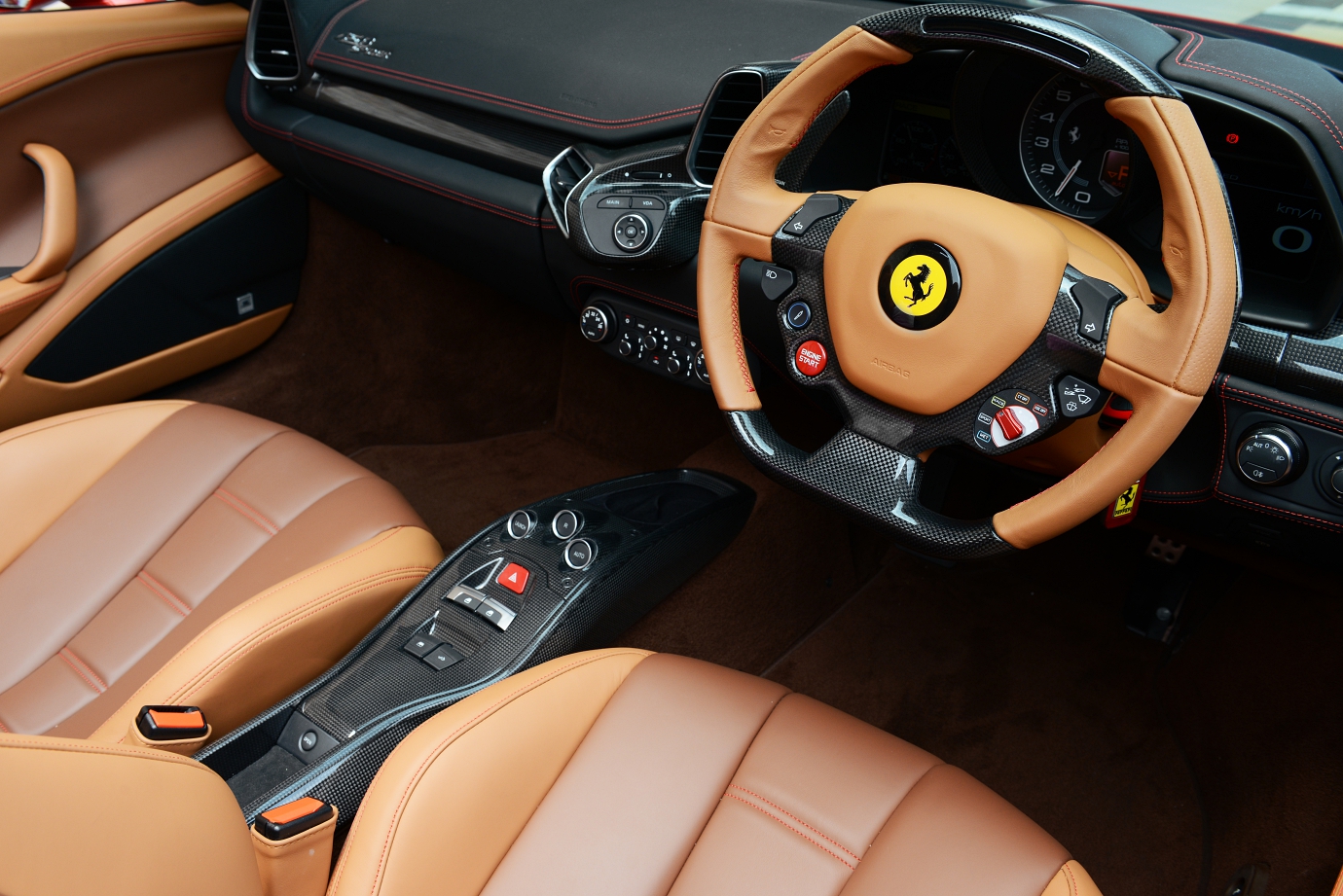
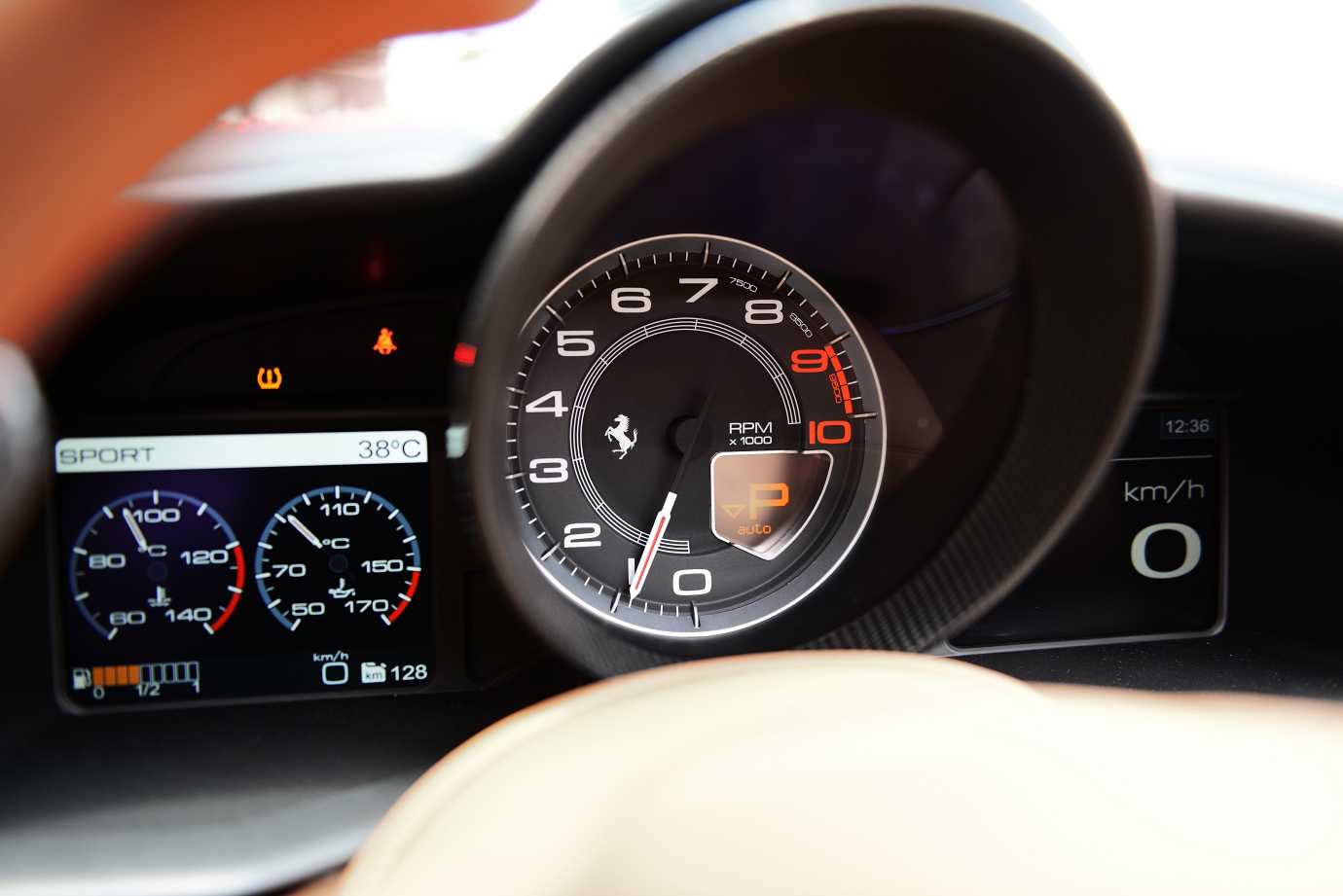
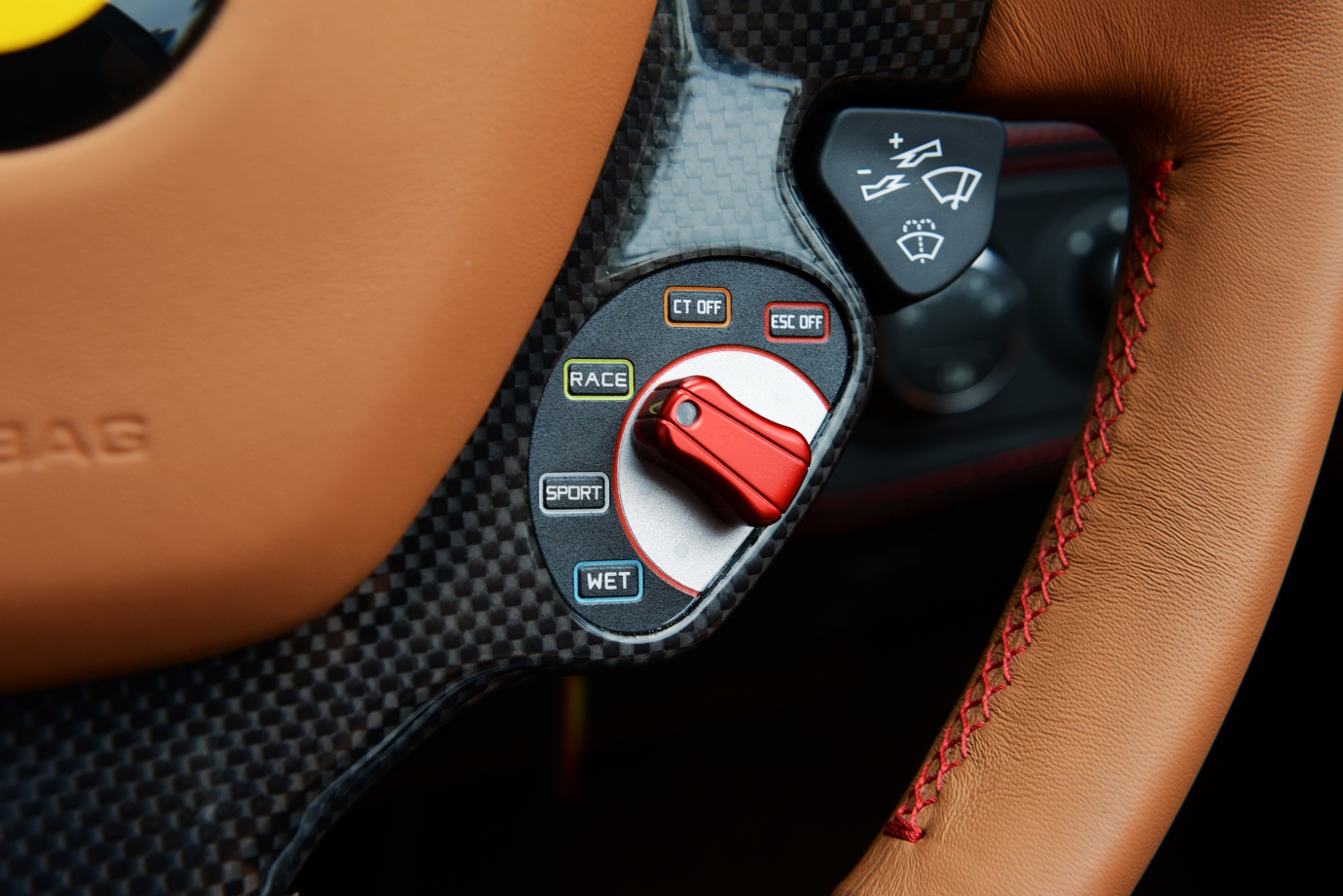
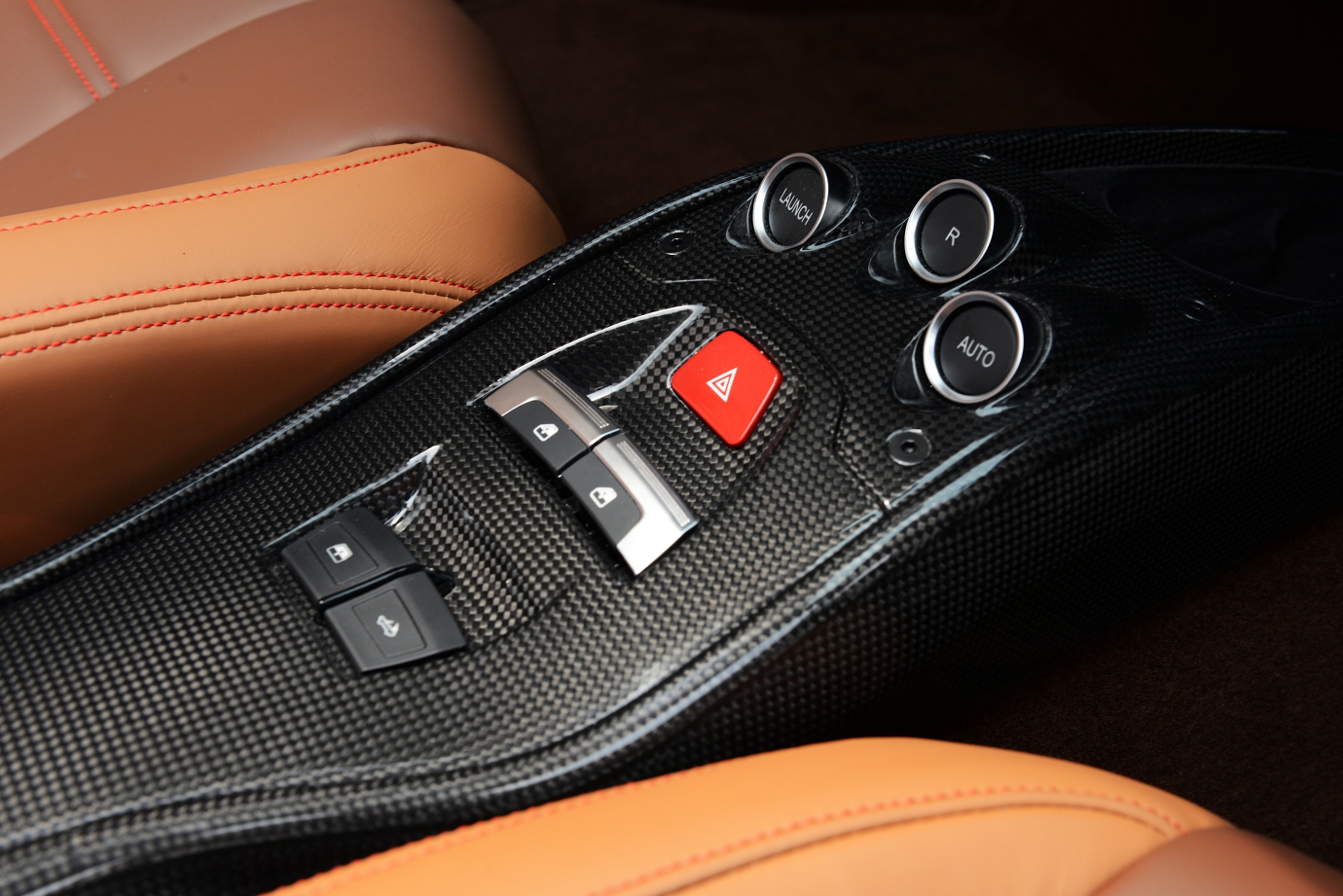
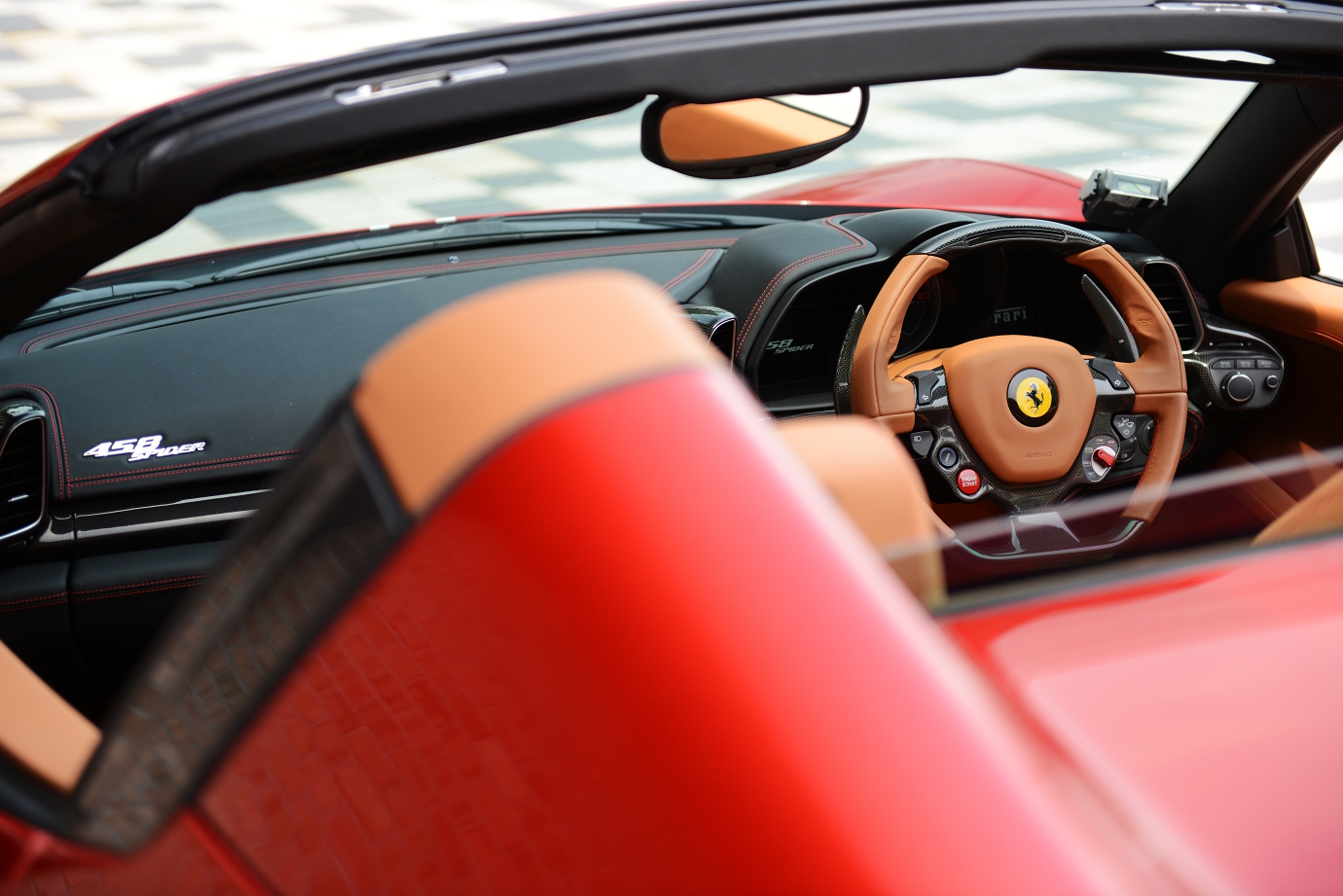
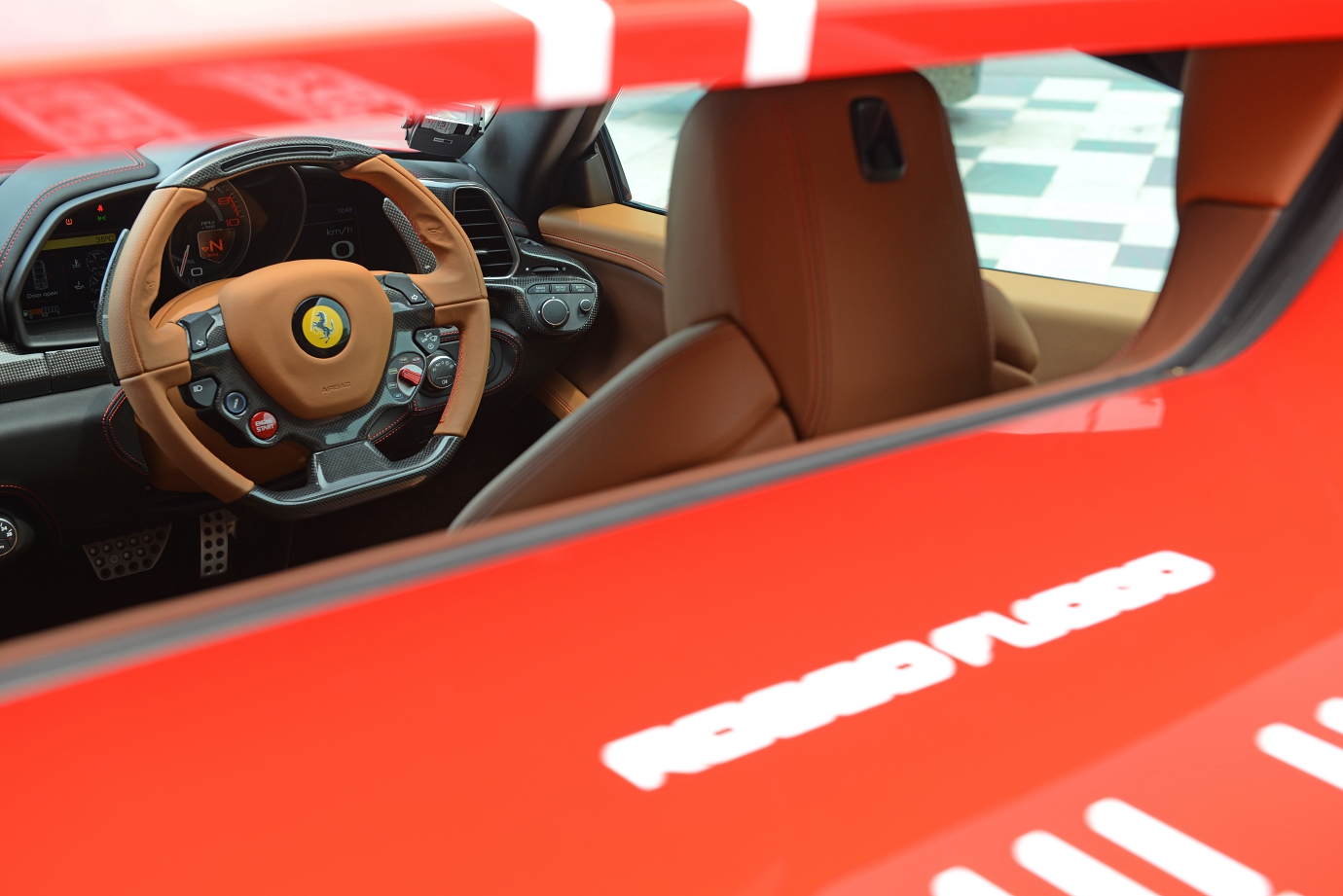
The 458’s also had the distinction of featuring all the important driver controls around the steering wheel, which includes indicator buttons that have been integrated into the fascia of the steering wheel, as well as ‘Bumpy Road’ suspension mode, amongst the others.
The traditional rev counter (customisable colours too!) is flanked by digital screens that always let you keep tabs on the car’s condition – it’s best to keep an eye on the right hand speed display, since flat out, the Spider will touch 100km/h from standstill in a little over the time it takes to blink your eyes.
As with all manner of exotic evolution, every successive model is faster than its predecessors and the 458 Spider is no exception. There will always be two camps to every car, especially once you cross-over into the realm of sportscars. One group will chase the latest and shiniest machines and another that seek to re-capture the best iterations of a dying breed.
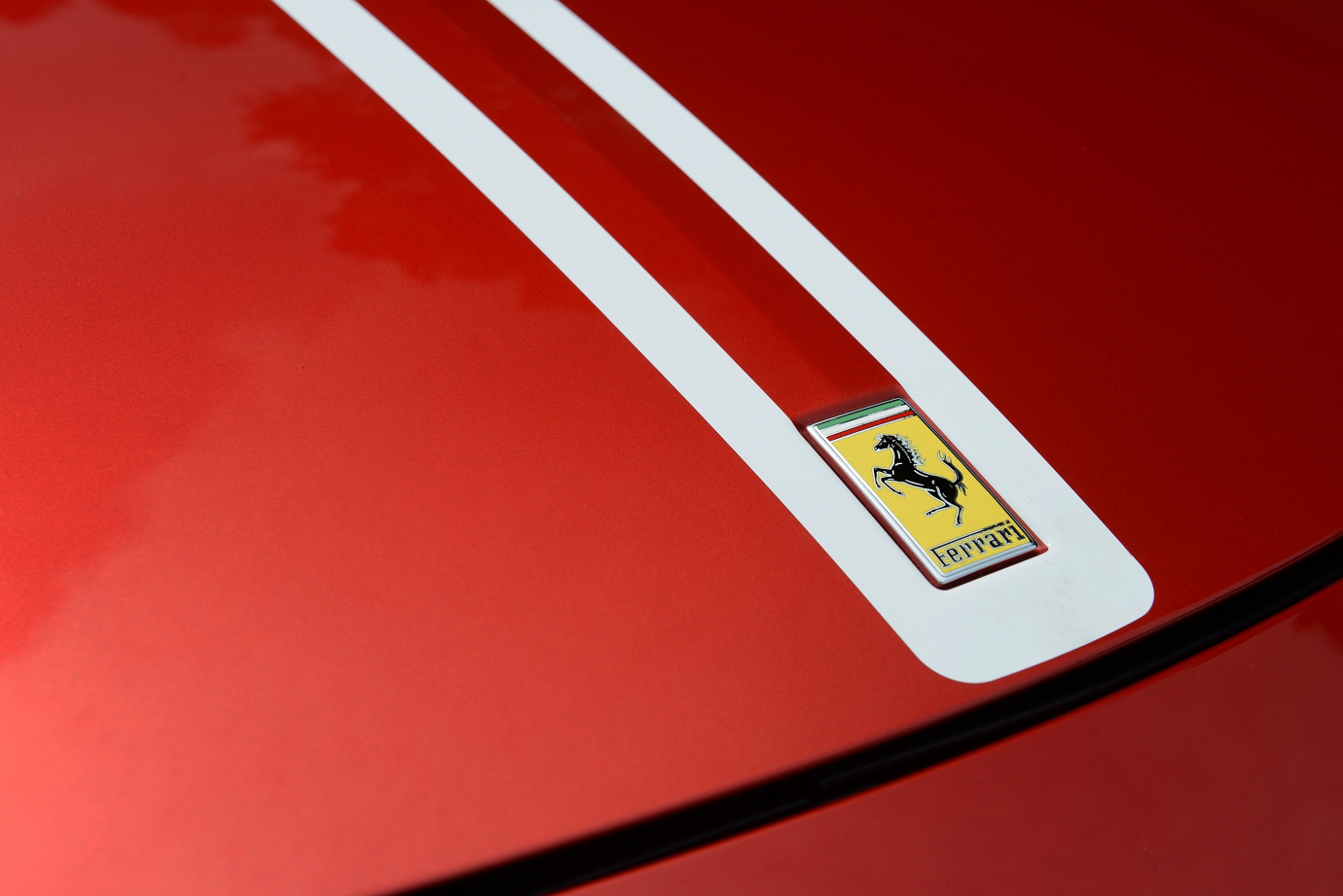
Of course, the core business of any distributor is to sell new cars, but given the peculiarities of the Singapore car market, there’s a growing emphasis on Ferrari Approved pre-owned cars as well, which also contributes to the distributor’s bottom-line.
Only by growing the fascination in both the new, as well as the historical or discontinued models can any brand build the right sort of equity, as opposed to only attracting the type of buyers who are quick to gravitate between brands in search of the new-newer-newest cars.
To answer the unspoken question, we’re often asked about our old meets new features (some brands frown on any group feature involving its current models, even if it’s a retrospective feature with fellow stable-mates), especially in cases where the new model may not be a clear successor.
We make it a point to pick the sort of cars that strike a chord among the enthusiasts, which means performance cars, not commuter cars, since in this specialised segment, an older model is never a question of money, but of choice...
PHOTOS Vanq
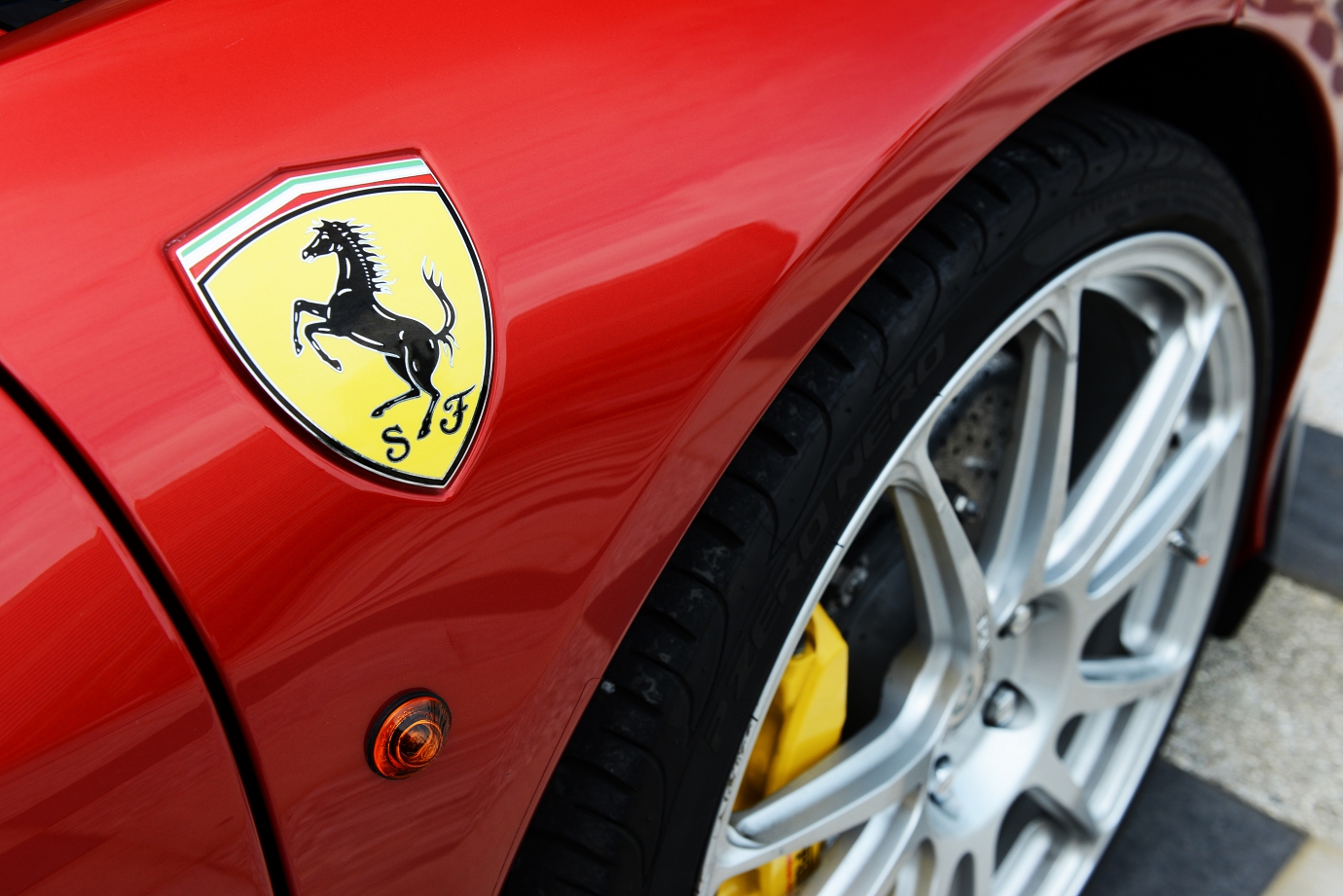
Ferrari F430 Spider
Engine 4308cc, V8
Power/rpm 490bhp/8500rpm
Torque/rpm 464Nm/5250rpm
Transmission 6spd Manual
0-100km/h 4.1secs
Top Speed >310km/h
Kerbweight 1520kg
Fuel consumption 15.2ll/100km
CO2 345g/km
Ferrari Scuderia Spider 16M
Engine 4308cc, V8
Power/rpm 510bhp/8500rpm
Torque/rpm 470Nm/5250rpm
Transmission 6spd F1-SuperFast2
0-100km/h 3.7secs
Top Speed 315km/h
Kerbweight 1440kg
Fuel consumption 15.7l/100km
CO2 360g/km
Ferrari 458 Spider
Engine 4497cc, V8
Power/rpm 570bhp/9000rpm
Torque/rpm 540Nm/6000rpm
Transmission 7spd F1 dual-clutch
0-100km/h <3.4secs
Top Speed 320km/h
Fuel consumption 11.8l/100km
CO2 275g/km
